Bushes and shrubs are woody, perennial plants that can take a variety of shapes, colors, and forms. The difference between a shrub and a tree is rather ambiguous. In fact, some trees have “dwarf” varieties that look much more like a bush than a tree. In general, a bush or a shrub is a small, multi-stemmed plant.
IDENTIFY NEW PLANTS WITH OUR APP
Hundreds of shrubs are valued for their ornamental value, being used as hedges or for their beautiful blooms. They can be divided into two big categories – evergreen and deciduous.
Evergreen Shrubs
Evergreen shrubs retain their leaves all year. These are especially valued in landscaping as their leaves persist in the winter, adding some much-needed life to a garden during an otherwise bleak season.
Deciduous Shrubs
Deciduous shrubs lose their leaves for the winter. These are often valued for their beautiful colors when their leaves turn during fall. If you want your garden to have a dynamic appearance throughout the year, deciduous shrubs are the way to go.
Browse the following list to learn about over 100 different bushes and shrubs. We’ll go over their names, where they grow, and their defining characteristics.
Conifer Shrubs
Up first: some conifers. Conifers are types of gymnosperms, and the following bushes make for excellent hedges and “living walls” due to their dense, evergreen foliage.
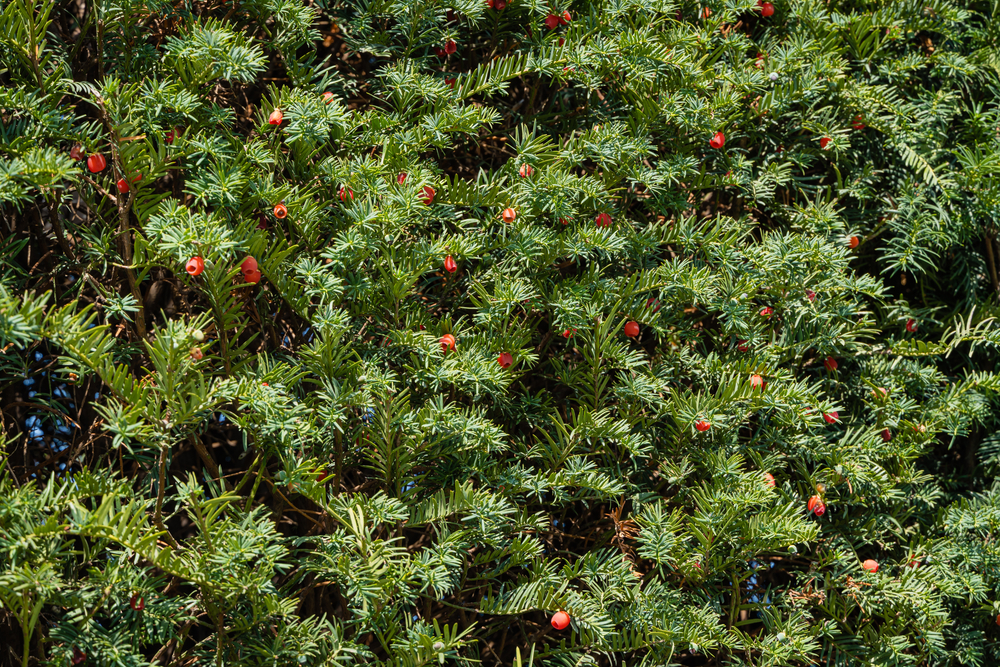
Yew Bushes
Scientific name: Taxus spp.
Native to: The Northern Hemisphere.
Description: Yews tolerate a wide variety of soil and light conditions. They grow slowly but will produce a thick bundle of inch long needles. Their fleshy red cones look like berries and attract birds and other wildlife. Perfect for hedges and living fences. Yews also have fascinating medicinal properties.
Flaky Juniper
Scientific name: Juniperus squamata
Native to: Himalayan Mountains
Description: Flaky juniper’s blue-green foliage provides beautiful color to any garden in cool temperate regions. It prefers well-drained soil and is mostly utilized as a low-growing, prostrate shrub that makes for a great ground cover.
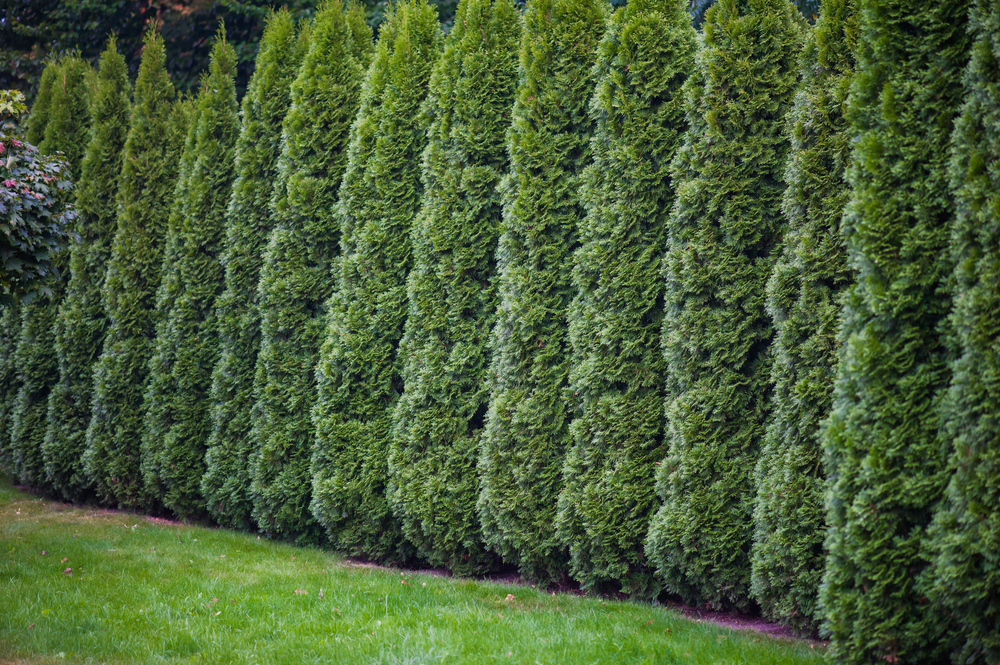
Arborvitae
Scientific name: Thuja spp.
Native to: North America, Europe, and Asia.
Description: Another great hedge plant, Arborvitae is a dense, cone-shaped shrub. It can tolerate full sun but does equally well in partial shade. Plant multiple in a row for an attractive, bright green living wall that will stand strong year-round. It’s also a perfect choice for a privacy hedge.
Siberian Cypress
Scientific name: Microbiota decussata
Native to: Southeastern Siberia.
Description: Siberian cypress is a dense, low-growing conifer that prefers cool summers and wet, well-drained soil. It doesn’t grow tall enough to create a proper hedge, but it’s perfect to plant alongside paths and as an accent on the edge of gardens.
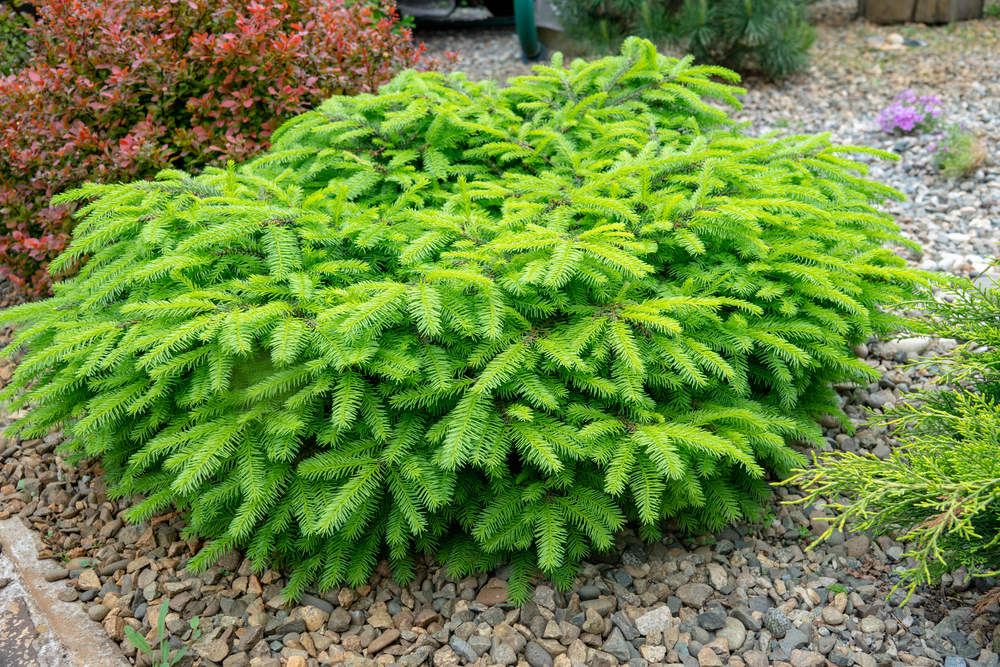
Dwarf Norway Spruce
Scientific name: Picea abies “Pumila”
Native to: Europe. Especially common in Scandinavia.
Description: This Norway spruce cultivar is a low-growing, globose shrub that grows wider than it does tall. It does best in cooler regions in well-drained soil and full sun. The lower branches readily spread outward, creating a good ground cover.
Eastern Hemlock
Scientific name: Tsuga canadensis
Native to: Eastern North America.
Description: There are many eastern hemlock cultivars that display a variety of colors and shapes. Generally, they are dense, globose shrubs that thrive in partial to full shade.
Flowering Shrubs
The remainder of our bushes and shrubs are all angiosperms, AKA flowering plants. They are all broadleaf shrubs and can either be evergreen or deciduous. Many of these are renowned for their attractive foliage, striking flowers, or both! The first plants on our list are organized in no particular order. Then, shrubs are grouped into some common plant families.
English Holly
Scientific name: Ilex aquifolium
Native to: Europe and Western Asia.
Description: English holly is famous for its spiky, evergreen leaves. It produces red berries that attract various wildlife. It’s normally planted for its ability to create thick hedges but will grow to be a small tree as well. These days, it’s an invasive plant in many places in North America.
Japanese Laurel
Scientific name: Aucuba japonica
Native to: China, Taiwan, and Japan.
Description: Japanese laurel is famous for its colorful, evergreen leaves and red berries. The variegated leaves add a splash of color to any garden year-round. This medium to large shrub does best in shade, especially in hotter climates.
California Spicebush
Scientific name: Calycanthus occidentalis
Native to: California.
Description: California spicebush is a large, deciduous shrub that produces beautiful, dark red flowers in the late spring. The flowers give off a rich aroma as well, often described as smelling like a wine cellar. Although it’s found only in California in the wild, this ornamental bush can be easily grown in a variety of soil and sun conditions.
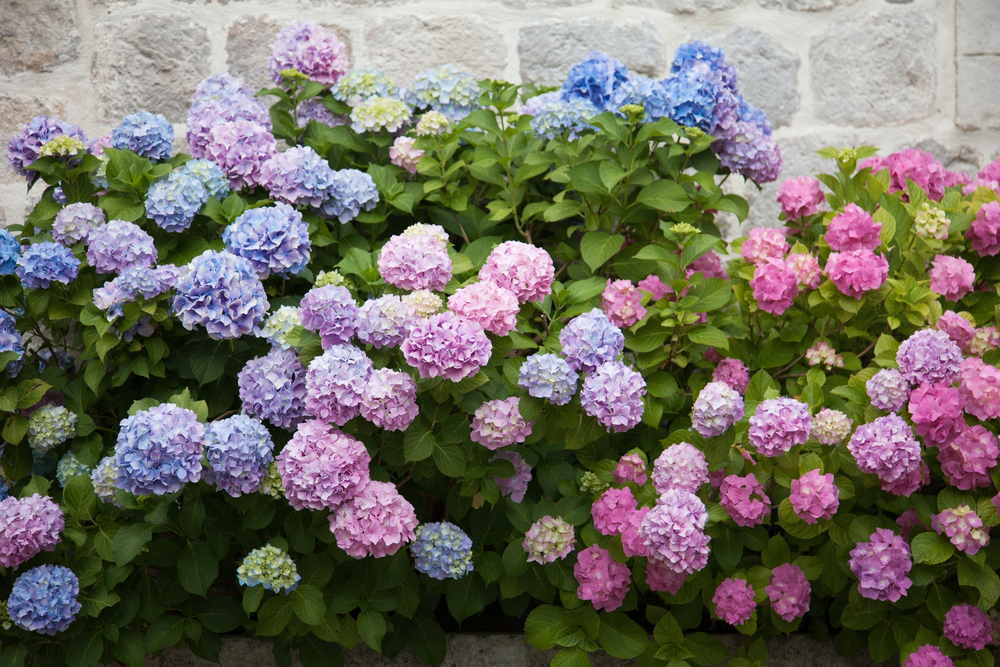
Hydrangea
Scientific name: Hydrangea macrophylla
Native to: Japan
Description: Hydrangeas are some of the most popular ornamental shrubs in the world, and there are loads of cultivars to choose from. Their large, colorful flower clusters persist for many months. The pH of the soil affects the color of the flowers, with more acidic soil leading to blue flowers and more alkaline soil leading to pink flowers. Hydrangeas can grow in a variety of conditions, but the soil should be kept moist if growing in hot, full sun.
Deutzia
Scientific name: Deutzia spp.
Native to: Asia and parts of Europe.
Description: Deutzia is in the same family as Hydrangea and also produces large, colorful flower clusters. Deutzia is super shade tolerant, and will easily bloom without receiving a speck of direct sun. Many species have deciduous leaves that turn bright red in fall.
Winter Daphne
Scientific name: Daphne odora
Native to: China and Japan.
Description: Winter daphne gets its name from the fact that it blooms in late winter. In addition, the name “odora” comes from its pleasant, odorous flower. It prefers cold winters and won’t do well in hotter climates. It also prefers moist growing conditions, so make sure you don’t let the soil dry out completely and keep it out of full sun.
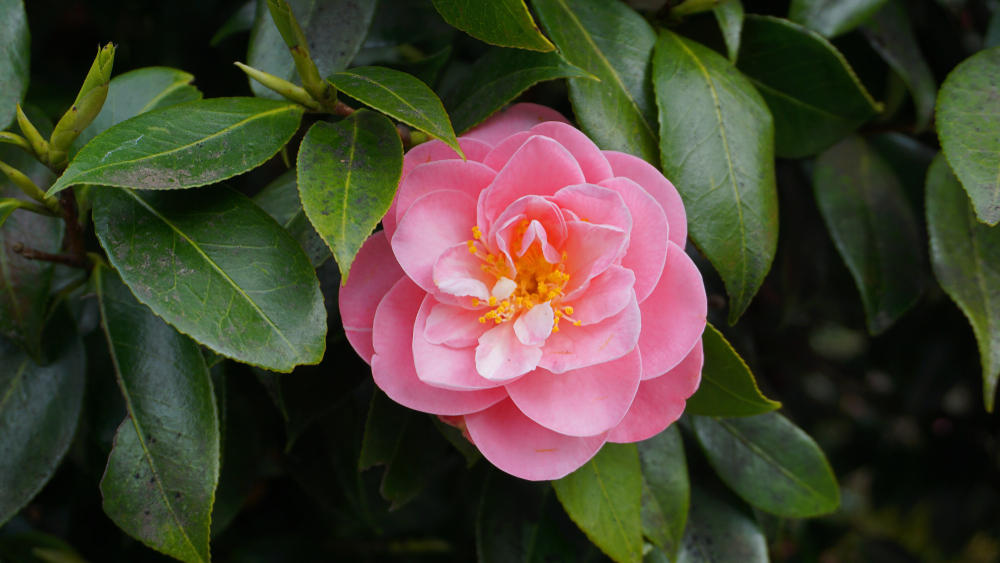
Camellia
Scientific name: Camellia japonica
Native to: Japan, China, and Korea.
Description: Camellia is a tall shrub prized for its exquisite rose-like blossoms. It has deep green, evergreen foliage makes it a great choice for a winter garden. Many cultivars are winter hardy and will survive in below-freezing temperatures. Camellias typically need moist soil year-round.
Viburnum
Scientific name: Viburnum spp.
Native to: Viburnum species grow naturally all over the world.
Description: Many species of viburnum are common ornamental bushes and shrubs. They vary in size and shape, but all have evergreen leaves and attractive flowers. Some species produce colorful fruit that provides birds and other wildlife food during the winter months. Depending on the species and cultivar, viburnums can tolerate a huge variety of conditions so they’re pretty low-maintenance.
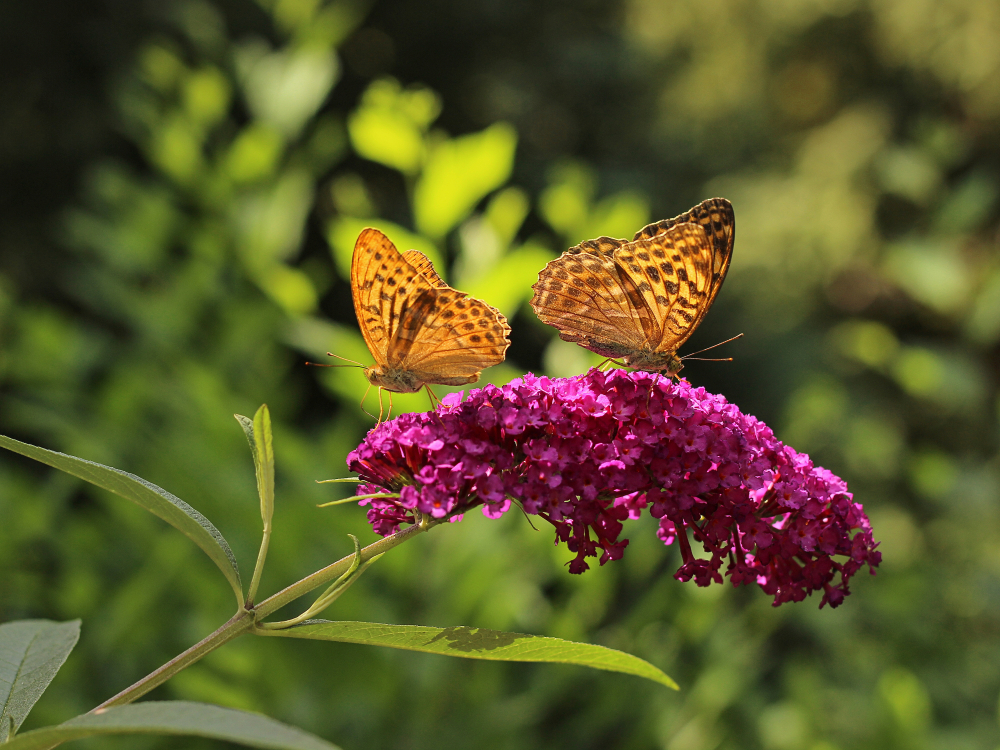
Butterfly Bush
Scientific name: Buddleja davidii
Native to: Asia, Africa, and the Americas.
Description: As its name suggests, butterfly bush attracts tons of butterflies and other pollinators thanks to its explosion of fragrant flowers. Some cultivars of this plant can grow to be 15 feet wide and 10 feet tall, so if you choose to plant it in your garden make sure it has lots of space to grow. Butterfly bush likes well-drained soil and lots of sun.
Japanese Aralia
Scientific name: Fatsia japonica
Native to: Japan and Korea
Description: Japanese aralia is a common houseplant that is perfectly happy growing in a pot indoors. In warmer climates, Japanese aralia can thrive outdoors as well. It has dark green leaves that are deeply lobed. This tall, skinny shrub can grow up to 15 feet, so make sure to give it enough vertical space to grow.
Chinese Fringe Flower
Scientific name: Loropetalum chinense var. rubrum
Native to: China, Southeast Asia, and Japan
Description: Chinese fringe flower is famous for its dark purple, evergreen leaves and splash of red flowers. It provides a warm color to any garden, even in winter. This shrub likes sunny locations where its purple leaves will really stand out. Chinese fringe flower needs rich, well-drained soil.
Blue Snakeweed
Scientific name: Stachytarpheta cayennensis
Native to: Central and South America and the Caribbean.
Description: Blue snakeweed is a popular ornamental shrub in many tropical countries, but it can also be grown in warmer subtropical and temperate climates. It will put out flowers year-round warm enough, and the flowers attract butterflies and hummingbirds. This small shrub is perfect for a pollinator garden.
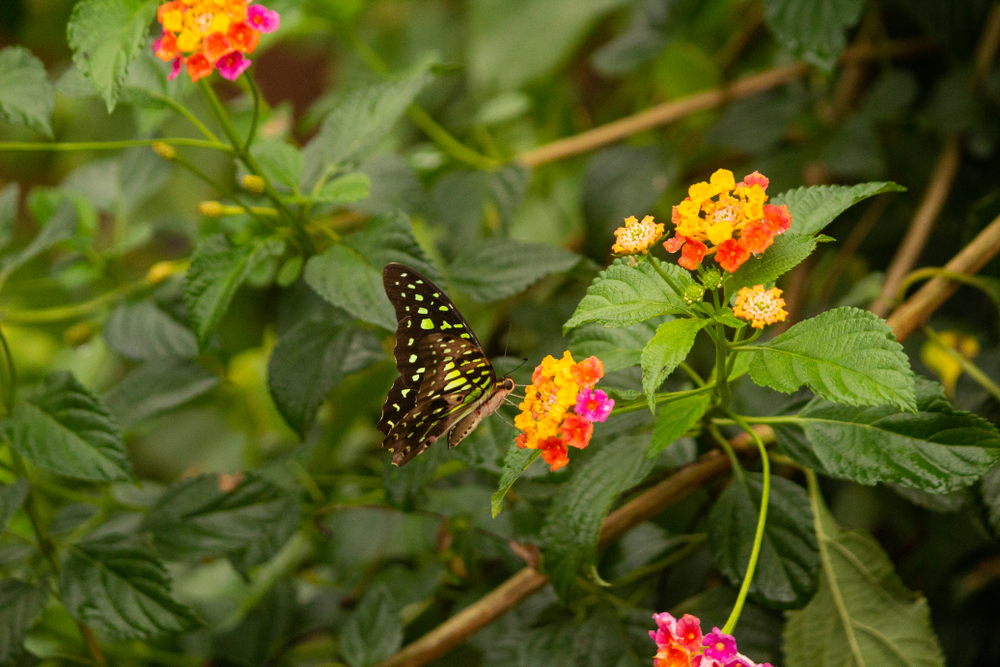
Lantana
Scientific name: Lantana camara
Native to: Tropical America
Description: Lantana is another great pollinator plant. Its red, orange, pink, and yellow flowers attract loads of butterflies and hummingbirds year-round. Lantana grows best in warm, tropical climates, but will get by in cooler regions as well, although you may not see many flowers. It likes sunny spots and well-drained soil.
Witch Hazel
Scientific name: Hamamelis virginiana
Native to: Eastern North America
Description: Witch hazel is a deciduous shrub perfect for winter gardens. It flowers in the fall after dropping its leaves, and the flowers can persist well into winter. The plant itself can grow to be rather large, up to 20 feet high. Witch hazel is easy to grow in many temperate regions, especially in eastern North America where it’s native.
Kousa Dogwood
Scientific name: Cornus kousa
Native to: Japan, Korea, and China.
Description: Kousa dogwood is a large, multi-stemmed shrub, often growing into a small tree. Regardless of the form it takes, this flowering plant puts on a beautiful display in the spring. The white “flowers” are actually four showy bracts that surround a cluster of small, true flowers. It also has attractive, papery, light green leaves.
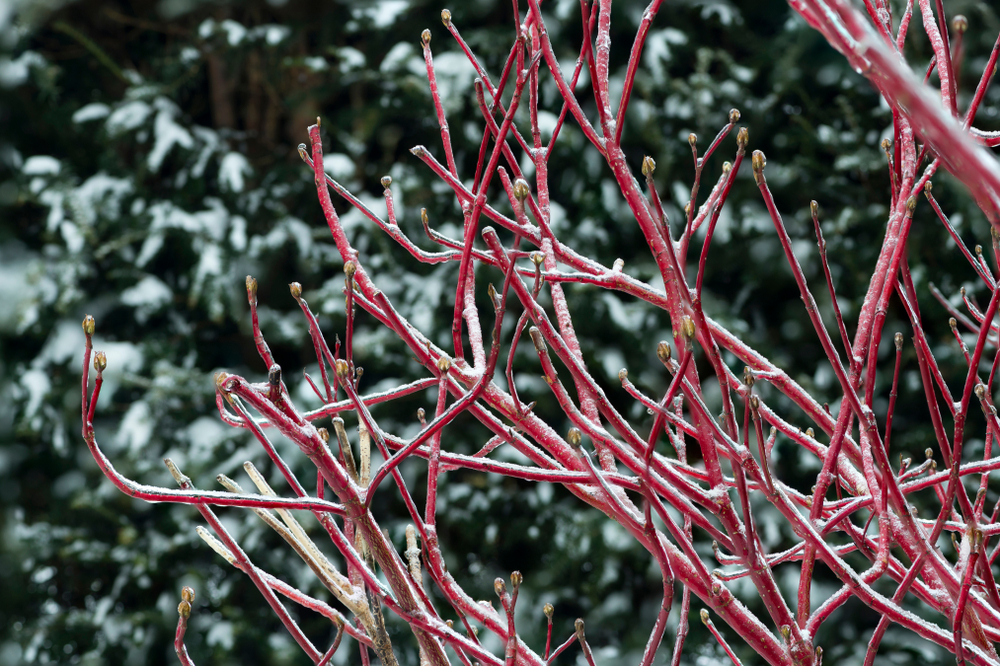
Red-Osier Dogwood
Scientific name: Cornus sericea
Native to: North America
Description: Red-osier dogwood, also known as red twig dogwood, is famous for its bright red stems and branches. It naturally grows in wetlands and swamps, so red-osier dogwood needs very wet soil. This stout, deciduous shrub is perfect for a winter garden where its bright red stems will stand out after dropping its leaves. In addition, it is a great choice for a rain garden, where it will survive in standing water for extended periods of time.
American Hazelnut
Scientific name: Corylus americana
Native to: Eastern North America
Description: American hazelnut is one of many species of hazels. It grows dense branches and foliage, making it a decent choice for a hedge. However, it’s a deciduous shrub, so it will offer less privacy during the winter months. The interesting flowers and fruit are a nice accent to gardens. It grows best in well-drained soil in full sun or part shade.
Banana Shrub
Scientific name: Magnolia figo
Native to: Southeastern China and Korea.
Description: Banana shrub, also called banana magnolia, is an evergreen shrub that forms dense, rounded clumps of foliage. The flowers are incredibly fragrant and smell like bananas, hence the common name. It can’t grow in regions with harsh winters but will thrive elsewhere with rich, well-drained soil and part shade.
Common Fig
Scientific name: Ficus carica
Native to: Western Asia and Southeastern Europe.
Description: The common fig has attractive, deciduous foliage but is more famous for its delicious, edible fruit. It grows as a spreading shrub that can get up to 15 feet high. It doesn’t do well in regions with below-freezing winters. However, it can be grown in containers that can be moved inside during winter. The common fig enjoys full sun and rich, well-drained soil.
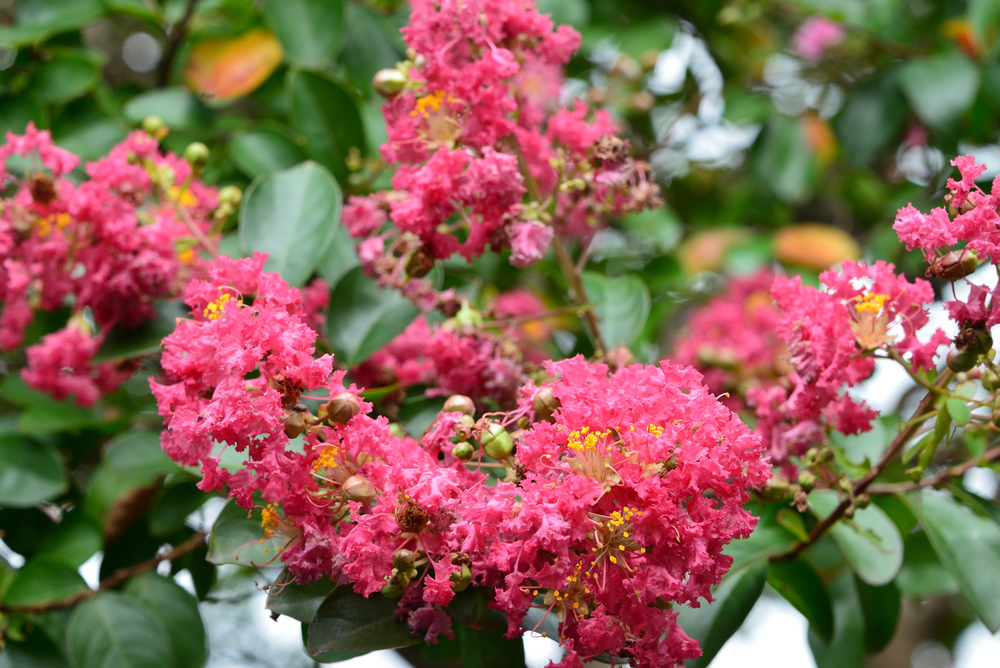
Crape Myrtle
Scientific name: Lagerstroemia indica
Native to: India, China, and Japan.
Description: Crape myrtle produces gorgeous pink flowers in the spring, and the blooms can last until late summer. This shrub produces multiple spreading stems that can reach 20 feet high, especially in warmer regions. You’ll see significantly less growth in places with harsh winters.
Barberry
Scientific name: Berberis thunbergii
Native to: Japan
Description: This small shrub is very easy to grow and is tolerant of harsh, urban conditions. It’s famous for the many cultivars that have red and purple leaves, but even the green varieties display vibrant colors in the fall when the leaves drop. Barberry does best in full sun and well-drained soil. However, it’s very invasive in many regions so check first if you should plant this shrub!
American Black Elderberry
Scientific name: Sambucus canadensis
Native to: North, Central, and South America
Description: American black elderberry is a widespread shrub that tolerates a variety of sun and soil conditions. It grows multiple, upright stems that reach up to 10 feet. It produces small, white flowers and numerous black fruit that can be used to make jams, jellies, and wine.
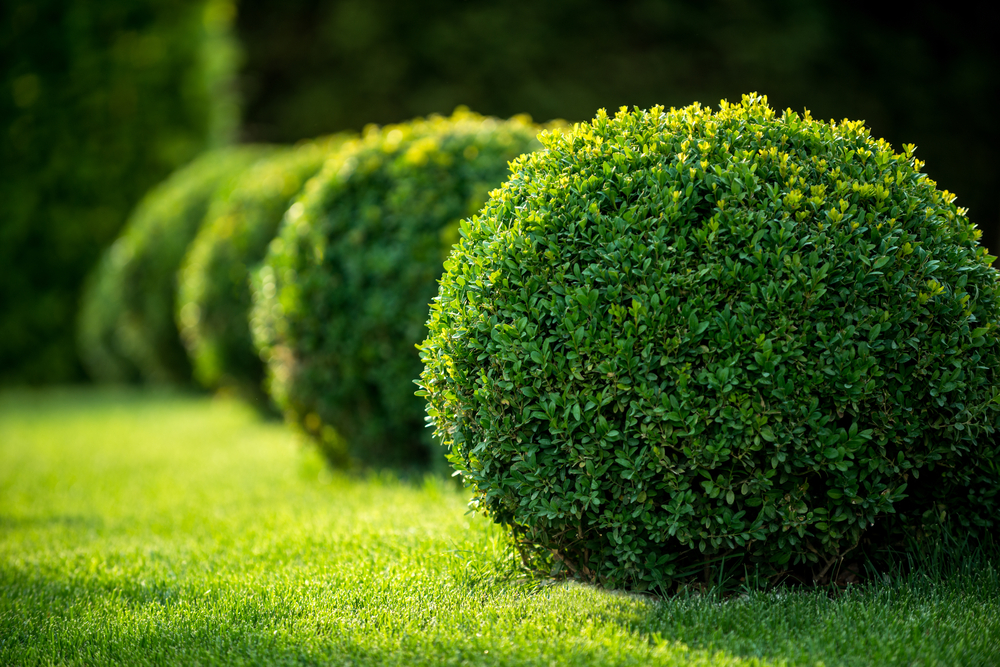
Common Boxwood
Scientific name: Buxus sempervirens
Native to: Southern Europe, Western Asia, and Northern Africa
Description: Common boxwood is the ultimate hedge plant. It has dense, evergreen foliage that responds well to pruning, so the small shrub can form to virtually any shape. It’s a perfect choice as a low hedge and will tolerate a variety of conditions.
Fortune’s Spindle
Scientific name: Euonymus fortunei
Native to: China and Japan
Description: This low-lying bush can make a great ground cover. But, it’s invasive in many places so it’s not planted as much as it used to be. Regardless, there are many varieties and cultivars that offer many different colors of variegated leaves. It’s incredibly tolerant of a variety of conditions and harsh urban environments.
Japanese Skimmia
Scientific name: Skimmia japonica
Native to: China and Japan
Description: This evergreen shrub is grown for its dense, dark foliage that can liven up a garden in the winter. It doesn’t grow all that big, so it’s a perfect choice if you’re tight on space. It’s shade tolerant too and thrives in dark areas with rich, well-drained soil.
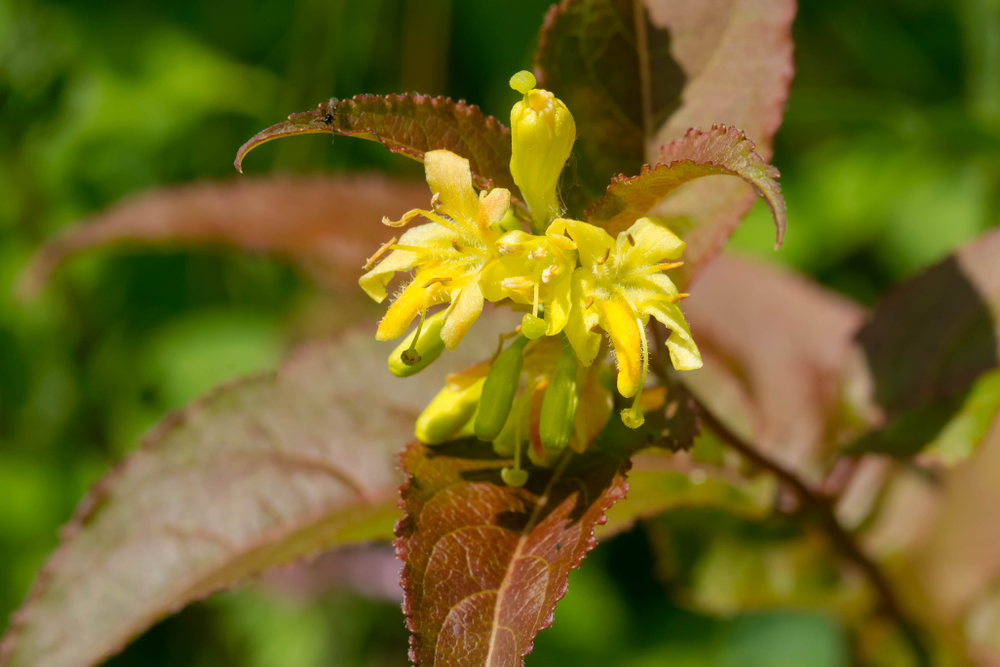
Bush Honeysuckle
Scientific name: Diervilla lonicera
Native to: Eastern North America
Description: Bush honeysuckle is in the same family as the honeysuckle vine, Caprifoliaceae. It’s a small shrub, only growing up to 4 feet high. Its yellow and orange flowers easily attract butterflies and hummingbirds in the summer months. Bush honeysuckle will do best in full sun and is also drought tolerant.
Firecracker Flower
Scientific name: Justicia floribunda
Native to: Brazil
Description: Firecracker flower is another small shrub that will produce bright yellow and orange flowers. It’s also able to attract hummingbirds and butterflies like many other bushes on our list. It will happily grow in full sun to part shade in rich soil.
Persian Shield
Scientific name: Strobilanthes dyeriana
Native to: Myanmar
Description: Persian shield is famous for its dark purple foliage. It can’t survive in colder regions but will thrive in subtropical and tropical conditions. However, it can also be grown indoors as a houseplant.
Rose Family (Rosaceae)
The rose family contains loads of bushes and shrubs used in landscaping. In fact, it’s the family that’s best represented by shrubs rather than trees or herbaceous plants. Plants in the rose family are usually quite hardy. Here’s a list of some of the most common bushes in the rose family, Rosaceae.
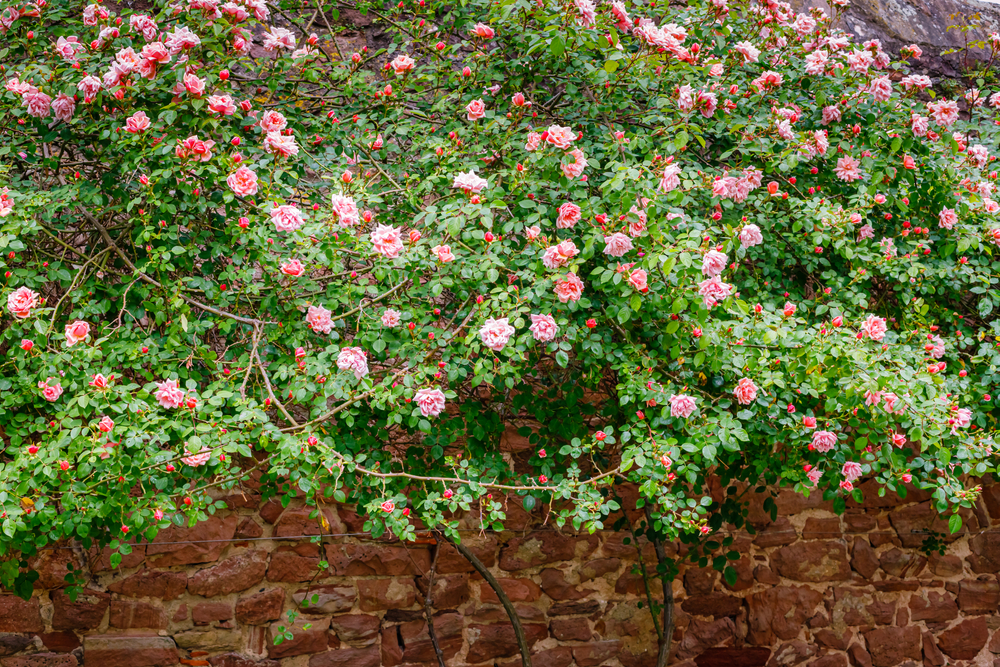
Rose Bushes
Scientific name: Rosa spp.
Native to: All over the world.
Description: Rose bushes are some of the most common cultivated shrubs. There are thousands of species and tens of thousands of cultivars, so there is a rose for every type of climate. Click here to learn all about different types of roses!
Spirea
Scientific name: Spiraea spp.
Native to: All over the Northern Hemisphere
Description: Spiraea joins roses as one of the most commonly cultivated shrubs. There are many species that show a wide variety of sizes, shapes, and flower colors. Spirea comes in many species and cultivars so they tolerate a variety of conditions, but virtually all spireas are happiest in full sun.
Himalayan Blackberry
Scientific name: Rubus armeniacus
Native to: Armenia and Iran.
Description: Himalayan blackberry is a vining, spiny plant that forms dense thickets. In many temperate regions, this dense shrub is incredibly invasive. It grows vigorously and produces delicious black fruit that can be made into jams, pies or eaten right off the plant.

English Laurel
Scientific name: Prunus laurocerasus
Native to: Southwest Asia and Southeast Europe
Description: English laurel is an evergreen shrub with dark, dense foliage. It’s grown primarily for its use as a hedge plant due to its tendency to spread wider than it is tall. It also produces highly fragrant flowers, even in dark shade. English laurel is invasive in Western North America.
Dwarf Flowering Almond
Scientific name: Prunus glandulosa
Native to: China and Japan
Description: Dwarf flowering almond is a small, deciduous shrub. It produces large pink flowers in the spring that can last multiple months. It’s also tolerant of a variety of conditions, even in harsh urban environments, but it typically needs well-drained soil.
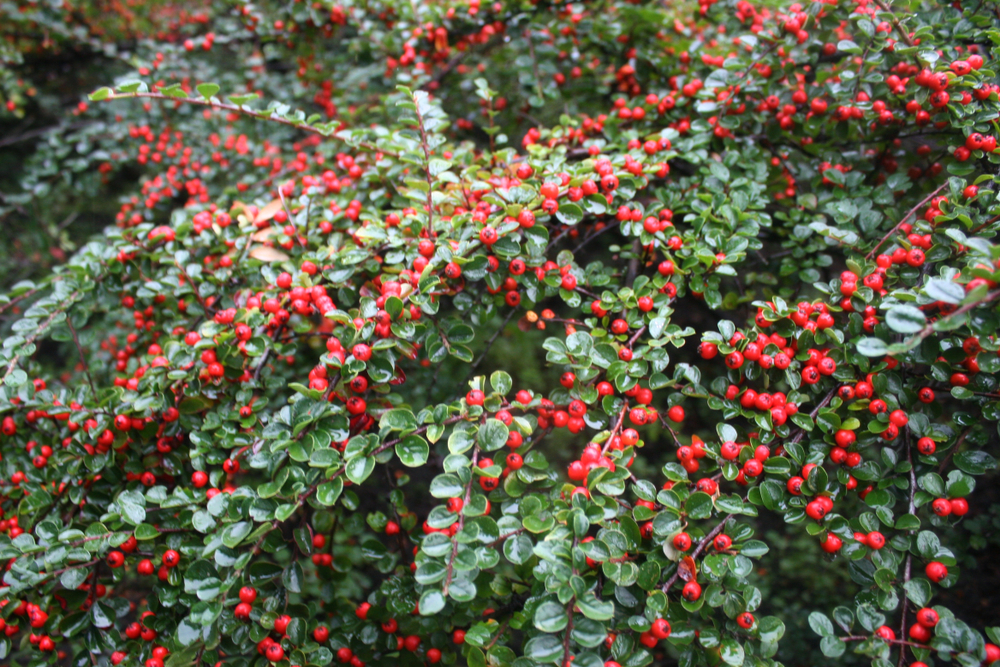
Cotoneaster
Scientific name: Cotoneaster spp.
Native to: Asia, Europe, and North Africa
Description: Cotoneaster is another very popular ornamental shrub. The genus Cotoneaster is very diverse, and members of the genus can either be low-lying, prostrate shrubs, or tall and tree-like. All cotoneasters produce abundant red berries in the fall which attract birds and other wildlife.
Firethorns
Scientific name: Pyracantha spp.
Native to: Europe and Asia.
Description: Firethorns are very similar to cotoneasters. A key difference is the presence of thorns on firethorns. But, like cotoneaster, these small shrubs produce abundant red berries.
Pacific Serviceberry
Scientific name: Amelanchier alnifolia
Native to: Western North America
Description: Pacific serviceberry is a shrub that can grow into many different sizes depending on the climate. It typically has many skinny, spreading stems with deciduous leaves. The small, white flowers of Pacific serviceberry are quite fragrant, and produce small blue fruit that will attract a variety of wildlife.
Ninebarks
Scientific name: Physocarpus spp.
Native to: North America
Description: Ninebarks are known for their flaky, exfoliating bark. Even when the leaves drop in winter, the woody stems of this deciduous shrub provide an attractive element to the garden. They also produce beautiful clusters of fragrant flowers. Ninebarks can be grown in many climates and conditions, but prefer a good amount of sun.
Chinese Quince
Scientific name: Chaenomeles speciosa
Native to: China
Description: Chinese quince is a large, deciduous shrub that forms dense thickets. So, it makes a good hedge plant, even without leaves in the winter. It’s also an easy shrub to take care of and will tolerate very dry conditions quite well.
Japanese Kerria
Scientific name: Kerria japonica
Native to: Japan and China
Description: Japanese Kerria is a tough, easy to grow shrub that will produce loads of flowers in the early spring. Although it’s deciduous, it has graceful, arching stems that remain yellow-green through the winter.
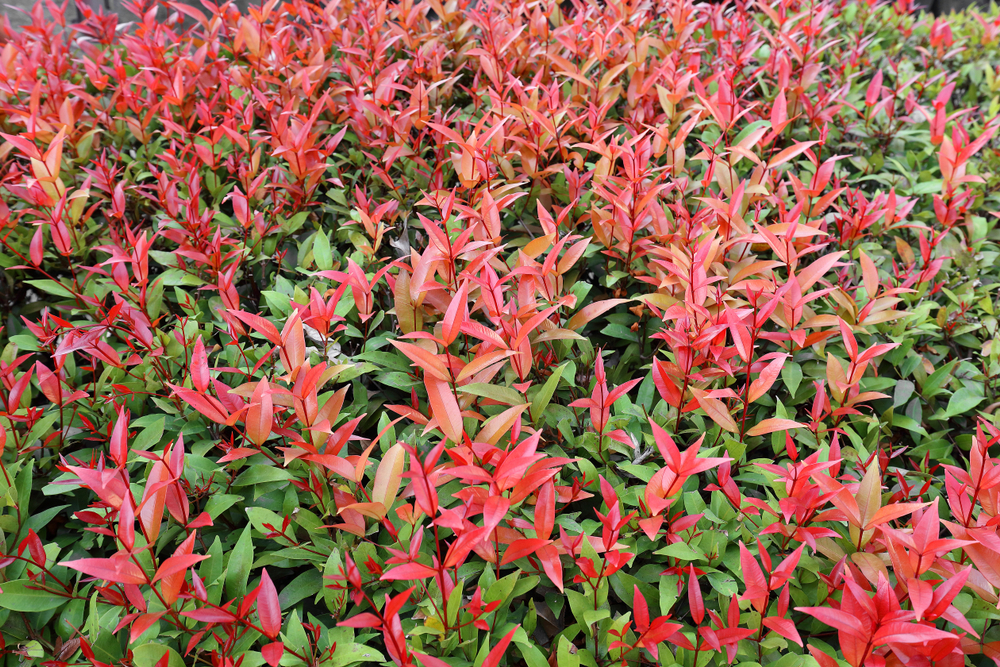
Red Tip Photinia
Scientific name: Photinia x fraseri
Native to: Asia
Description: Red tip Photinia is actually a hybrid between two species, Photinia glabra, and Photinia serratifolia. It’s famous for its bright red new leaves that slowly turn dark green. It produces dense, evergreen foliage and can grow up to 15 feet tall, so it’s an excellent hedge plant or living fence.
Legume Family (Fabaceae)
Fabaceae is the third most diverse plant family. Members of this family grow in pretty much every habitat on earth, and a number of species are common ornamentals.
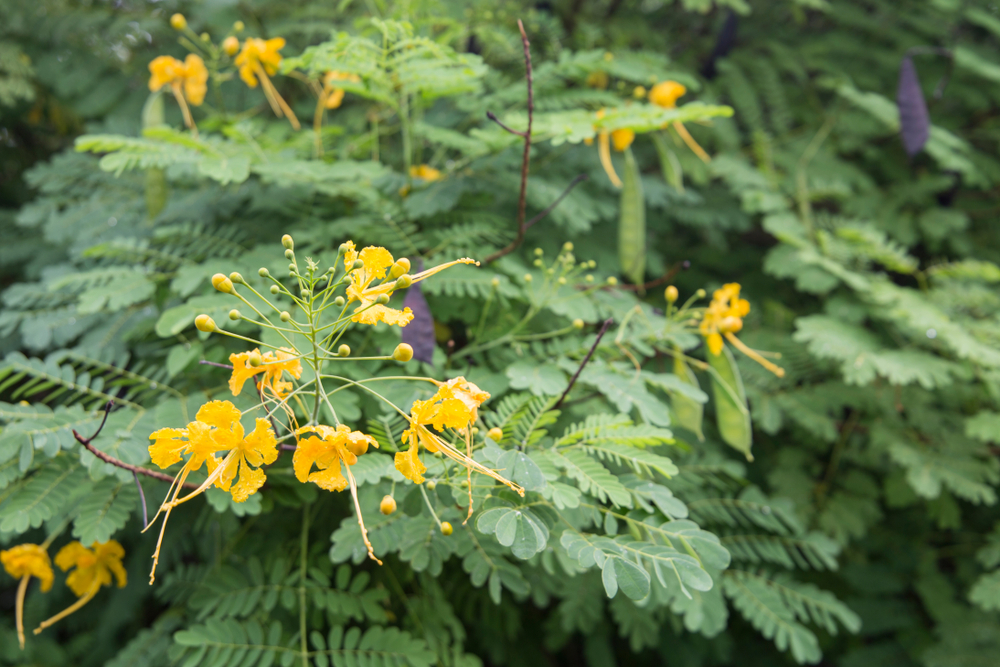
Peacock Flower
Scientific name: Caesalpinia pulcherrima
Native to: Tropical America and the Caribbean
Description: Peacock flower produces striking flowers that last through the year, at least in tropical regions. The red and yellow blooms attract loads of hummingbirds and butterflies. It also has delicate, fern-like compound leaves with many tiny leaflets. Peacock flower will do best in warm climates in full sun and well-drained soil.
Sensitive Plant
Scientific name: Mimosa pudica.
Native to: Central and South America
Description: Sensitive plant is named for its reactive nature. The compound leaves will quickly close with even the slightest touch. It also produces attractive, globose light pink flowers. Sensitive plant is a low-growing, creeping shrub that has become invasive in many tropical countries, including some in Southeast Asia.
Senna
Scientific name: Senna spp.
Native to: Tropical regions around the world
Description: This large, evergreen shrub grows well in tropical climates. It can grow up to 20 feet, so it definitely needs lots of space if planted in the garden. It produces papery, yellow flowers year-round and has attractive, light green leaves.
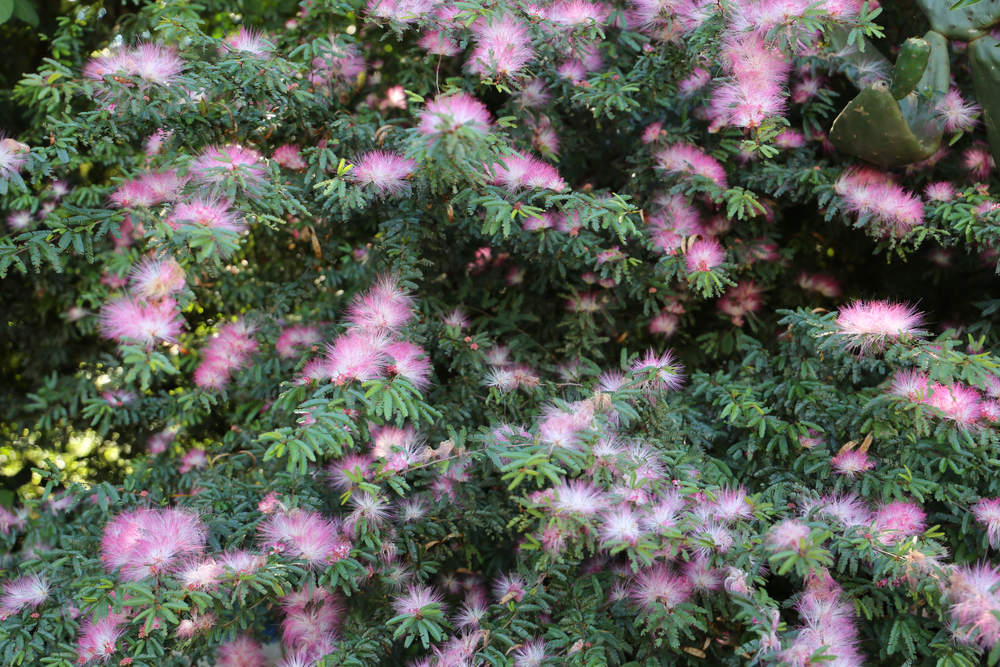
Powder Puff Tree
Scientific name: Calliandra spp.
Native to: Tropical America
Description: There are a few ornamental Calliandra species. All of them have large, puffy pink or red flower clusters in the shape of a sphere. They will tolerate some shade but do best in full sun as long as the soil is kept moist.
Indigo
Scientific name: Indigofera tinctoria
Native to: Tropical Asia and Africa
Description: This small shrub was the original source for blue dyes, and has been cultivated for thousands of years. It has light green, pinnate leaves and small pink flowers. It grows best in warm climates and can’t survive in places with cold winters.
Acacia
Scientific name: Acacia spp.
Native to: Tropical regions around the world
Description: Acacias, also called wattles, are graceful trees with spindly branches and tiny leaves. Many species have big hollow spines that ants live in. They produce small, sphere-shaped clusters of flowers that attract lots of bees and other pollinators. Acacias grow fast and they thrive in many soil types, but they typically require full sun.
Scotch Broom
Scientific name: Cytisus scoparius
Native to: Europe
Description: Scotch broom is an incredibly invasive weed. It’s a huge problem in North America and its eradication is proving to be very difficult. It was originally planted in the US as an ornamental shrub, due to its fast growth and easy care.
Mesquite
Scientific name: Prosopis glandulosa
Native to: Southwest United States and Mexico
Description: Mesquite is a large shrub or small tree covered in spines. It forms dense, rounded thickets and loves hot, dry climates. There are a couple of varieties that are commonly planted for their ability to attract loads of pollinators and other wildlife.
Mint Family (Lamiaceae)
The mint family is mostly known for its aromatic herbaceous plants. But, there are a few common ornamental bushes and shrubs, too.
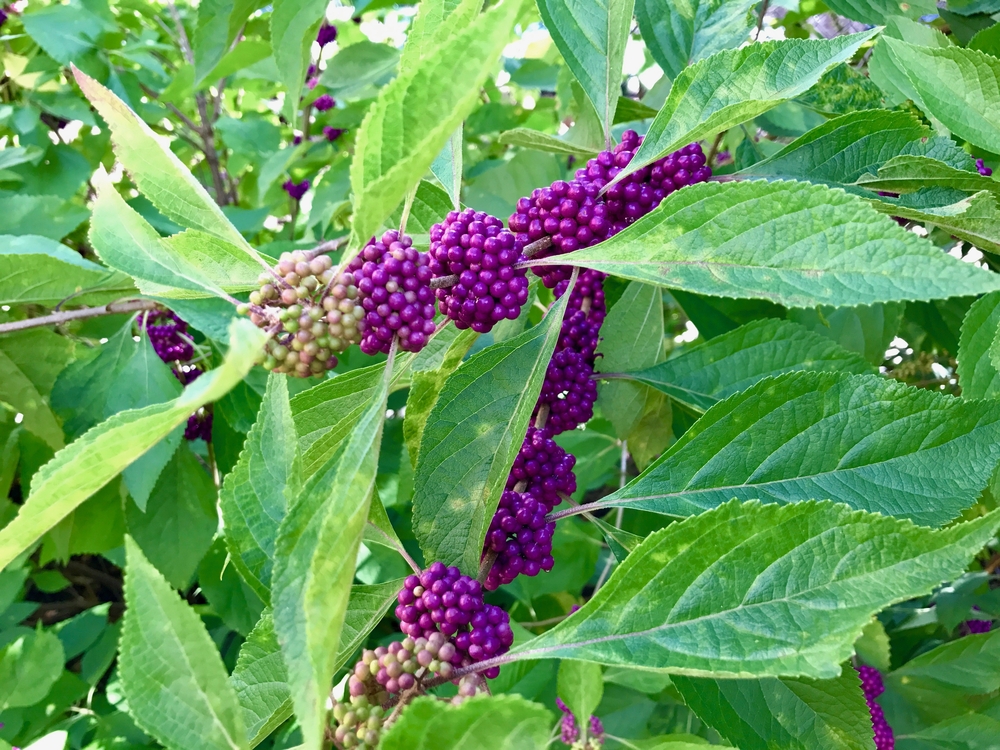
American Beautyberry
Scientific name: Callicarpa americana
Native to: Southeastern United States
Description: American beautyberry is famous for its one-of-a-kind, bright pink fruit. The unique berries are produced in large quantities at the base of each leaf. It’s a deciduous shrub that does best in its native soils but will perform well outside of the southeastern US if tended to properly.
Wall Germander
Scientific name: Teucrium chamaedrys
Native to: North Africa, Western Asia, and Europe.
Description: Wall germander is grown for its aromatic, evergreen leaves. Traditionally, the leaves were used medicinally. Nowadays, the low-growing shrub is planted as a low hedge or wall. Wall germander also produces small, pink flowers at each leaf axil. It needs lots of sun, so plant it in an open area with good drainage.
Coastal Rosemary
Scientific name: Westringia fruticosa
Native to: Australia
Description: Coastal Rosemary is native to Australia but is now commonly planted in California and similar environments. It’s a low-growing evergreen shrub that’s super hardy and drought-resistant, so it makes a great ground cover. Being a coastal plant, it’s also tolerant of salty conditions.
Coffee Family (Rubiaceae)
Rubiaceae, the coffee family, is one of the biggest plant families in the world. A number of ornamental bushes and shrubs belong to this family.
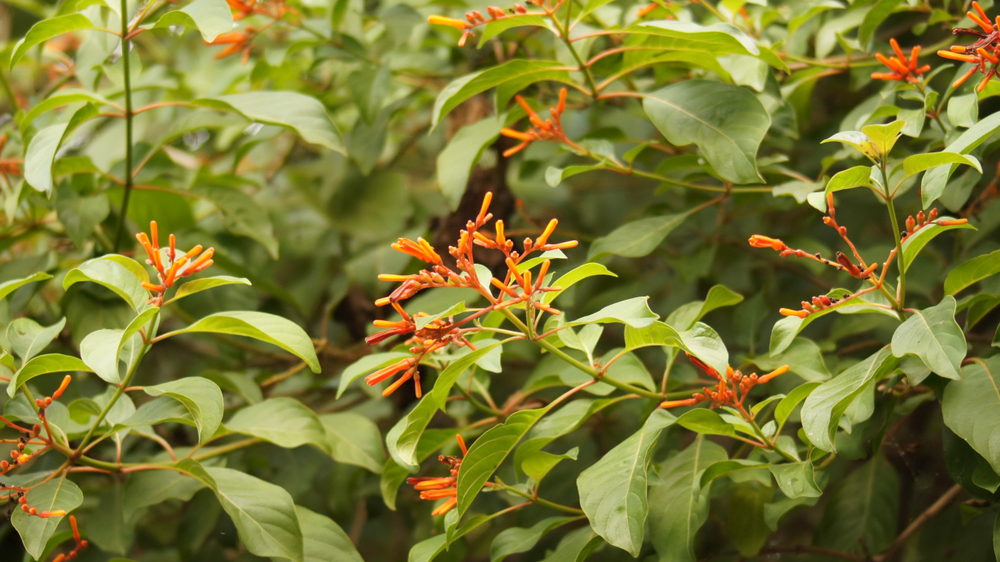
Firebush
Scientific name: Hamelia patens
Native to: American subtropics and tropics
Description: Firebush is named for its numerous, tubular red and orange flowers that attract hummingbirds. The evergreen leaves are also tinged with red, giving the whole plant a warm hue. Firebush is tolerant of a variety of conditions, as long as it’s warm. It won’t do well in colder climates.
West Indian Jasmine
Scientific name: Ixora spp.
Native to: Southern India, Bangladesh, and Sri Lanka
Description: West Indian jasmine is a small, dense shrub that will push out colorful flowers year-round. It attracts hummingbirds and butterflies, making it an excellent choice for a pollinator garden. It likes full sun and warm climates, and won’t survive in places with cold winters.
Coffee
Scientific name: Coffea arabica and Coffea robusta
Native to: Ethiopia
Description: Black gold, also known as coffee, comes from the seeds of the coffee bush. It produces fragrant white flowers and plump red fruit, in which the coffee “bean” is contained. Most coffee is produced in Latin America, even though the plant is native to Africa.
Noni
Scientific name: Morinda citrifolia
Native to: Southeast Asia and Australia
Description: Noni is now found all throughout the tropics and subtropics. It’s a large shrub that’s grown for its interesting fruit. The fruit smell utterly horrible, but are highly valued for their medicinal and nutritional benefits.
Mussaenda
Scientific name: Mussaenda spp.
Native to: Tropical African and Asia
Description: Mussaenda is a medium-sized shrub that produces large, showy bracts surrounding small flowers. It grows multiple, scrambling stems and spreads very wide, so it needs lots of space. It also can’t survive in cold climates but thrives in the tropics.
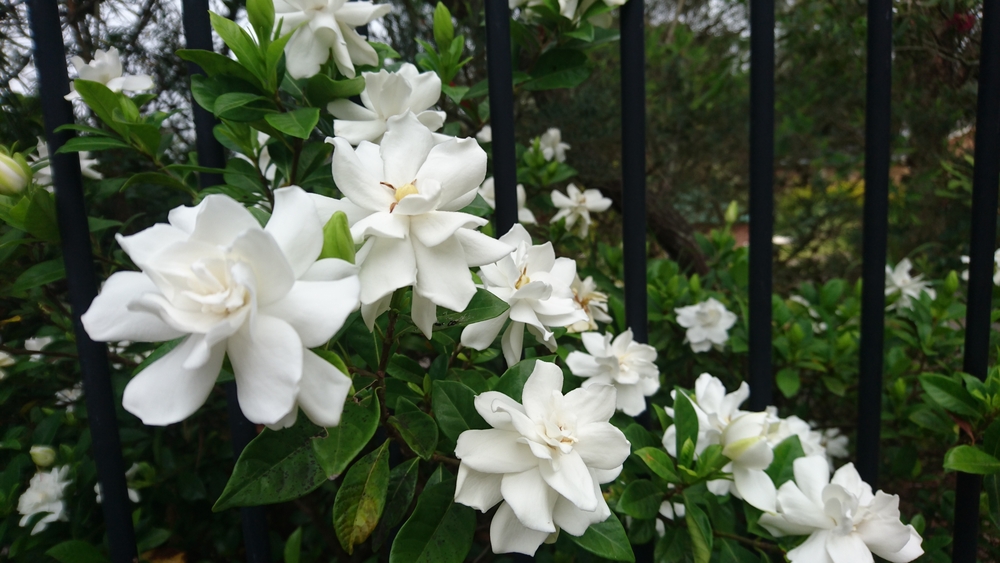
Gardenia
Scientific name: Gardenia jasminoides
Native to: China and Japan
Description: Gardenia grows as a round, dense evergreen bush and is useful as a hedge. But, it’s more known for producing large, fragrant white blooms. One cultivar is frost-proof, but most gardenias need to be grown in warm climates.
Wild Coffee
Scientific name: Psychotria spp.
Native to: Tropics and subtropics all over the world
Description: Psychotria is one of the most diverse plant genera in the world. Some of the common species, like Psychotria nervosa, have glossy, evergreen leaves and red berries. Most species of wild coffee produce flowers that attract a variety of pollinators and fruit that attract various birds. Some species are common in cultivation.
Spurge Family (Euphorbiaceae)
Euphorbiaceae is a family of toxic plants with lots of white latex. Despite their toxicity, many species are common ornamentals and some are even edible.
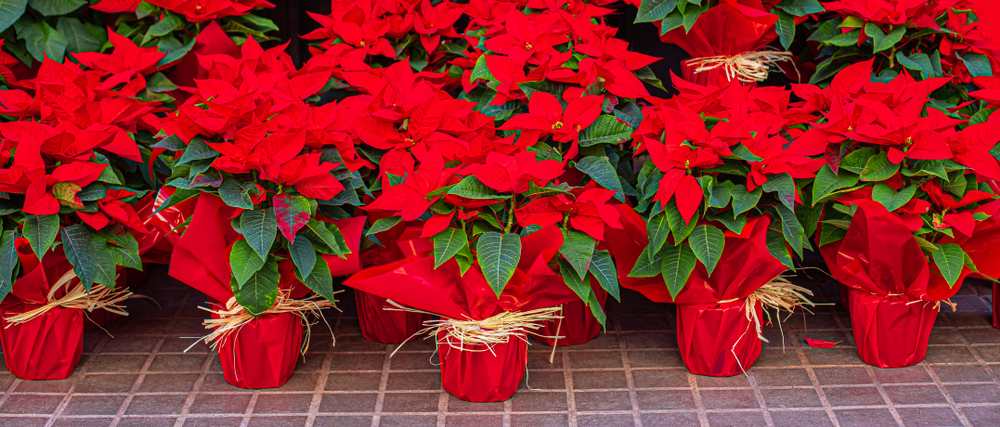
Poinsettia
Scientific name: Euphorbia pulcherrima
Native to: Mexico and Guatemala.
Description: Poinsettia is one of the most common ornamental plants. Its fame comes from the large, bright red bracts that surround the flowers. Poinsettia is especially common as a potted plant and is easy to grow as long as it’s kept warm and relatively wet.
Crown of Thorns
Scientific name: Euphorbia milii
Native to: Madagascar
Description: Crown of thorns is a small, dense shrub with spiny stems. Like poinsettia, it has bright red bracts which give gardens and rooms vibrant splashes of color. Crown of thorns retains its red bracts year-round. It grows best in full sun and well-drained soil, and is drought resistant thanks to its succulent stems.
Barbados Nut
Scientific name: Jatropha curcas
Native to: Central America and the Caribbean.
Description: Barbados nut is a tall deciduous shrub with large, lobed leaves. It grows well in hot, tropical regions and can’t really survive in cooler regions. It has bright red flowering structures which lend to its ornamental value. However, these days it’s primarily grown for the production of biofuel.
Cassava
Scientific name: Manihot esculenta
Native to: South America
Description: Cassava, also called manioc, is a dense shrub with lobed leaves. It’s most famous for the numerous edible tubers it produces, which are toxic if not cooked properly. There are also a few cultivars, some with attractive variegated leaves. It mostly grows in tropical regions, and won’t survive in temperate climates.
Castor Bean
Scientific name: Ricinus communis
Native to: East Africa and India
Description: Warning: Castor bean is one of the most poisonous plants in the world! Ingesting just one of its seeds can cause death in humans. Still, it’s a common ornamental shrub in tropical regions of the world. It has attractive foliage that turns from dark purple to green as leaves mature.
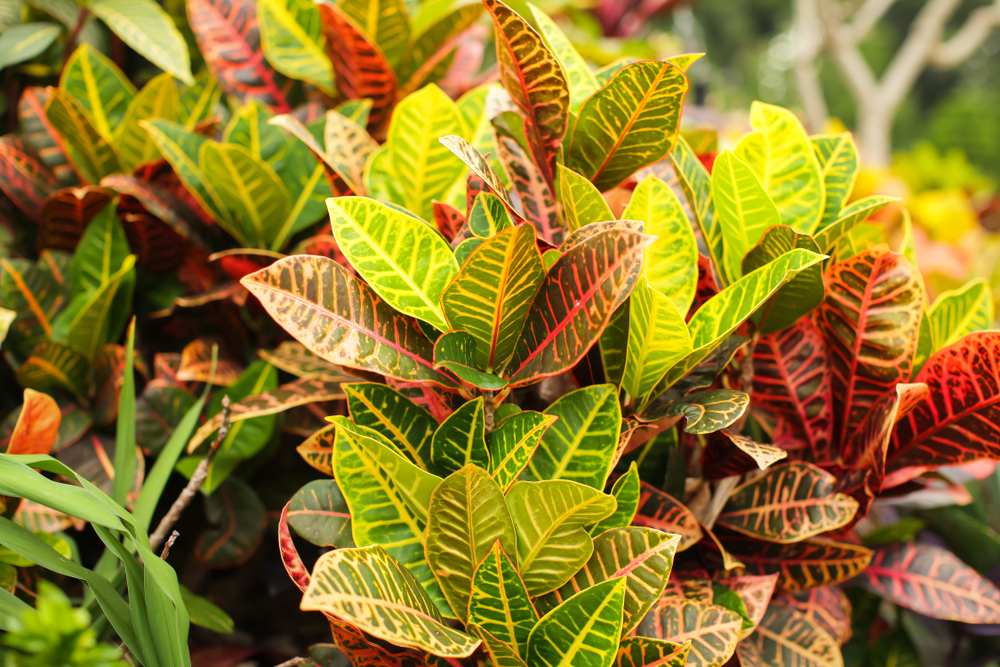
Croton
Scientific name: Codiaeum variegatum
Native to: Indonesia, Malaysia, and Australia.
Description: Croton is famous for its colorful, variegated leaves. It’s an evergreen shrub that can grow to be quite tall but will never spread too far wide. Grow it in full sun to maximize leaf variegation and appreciate the full spectrum of colors.
Nightshade Family (Solanaceae)
The plant family Solanaceae contains plants high in alkaloids. These alkaloids cause the leaves to be highly toxic, but many plants in this family are loved for their beautiful blooms and edible fruit.
Night-blooming Jasmine
Scientific name: Cestrum nocturnum
Native to: West Indies
Description: Night-blooming jasmine is aptly named. This small to medium shrub produces fragrant, white flowers that open exclusively at night. It also reportedly keeps mosquitoes away at night by attracting other insects as well as bats to its flowers.
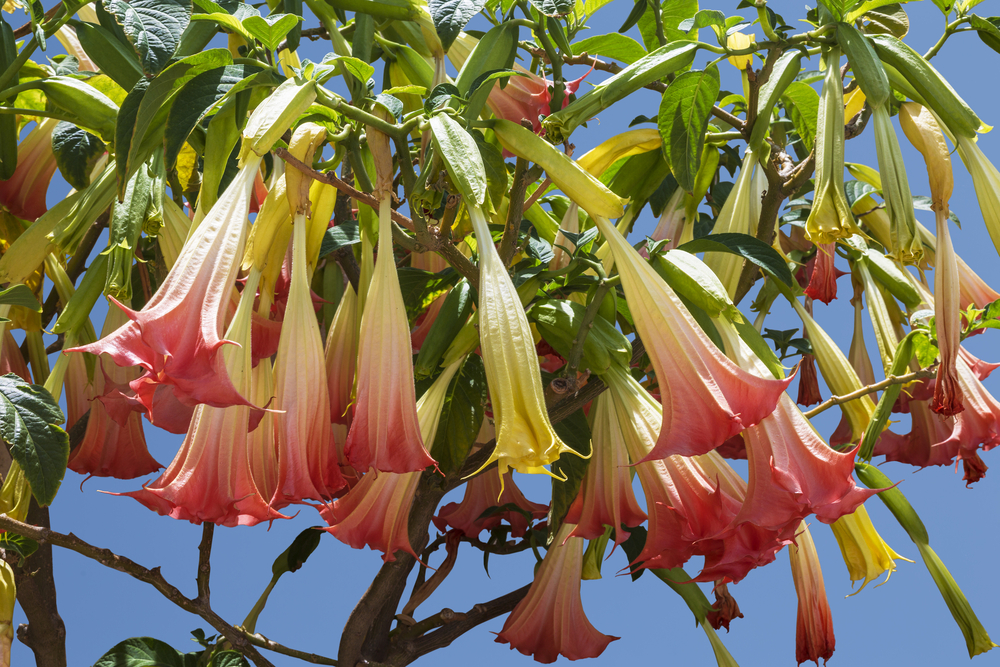
Angel’s Trumpets
Scientific name: Brugmansia spp.
Native to: Central and South America
Description: This large tropical shrub produces enormous, hanging flowers. It’s also one of the most toxic plants in the world. They’re common ornamental plants in tropical regions, but they can do quite well in temperate regions if planted in large pots. Just make sure they aren’t exposed to below-freezing temperatures in the winter.
Datura
Scientific name: Datura spp.
Native to: North, Central, and South America
Description: Datura is very similar to angel’s trumpet. It has equally large and beautiful flowers and is also highly toxic. Datura flowers are mostly white as opposed to pink, yellow, or orange as in angel’s trumpet.
Bittersweet Nightshade
Scientific name: Solanum dulcamara
Native to: Europe and Asia
Description: Bittersweet nightshade poses a huge problem as an invasive plant throughout North America. It produces small, purple flowers and interesting leaves that take a variety of shapes. It’s also very toxic, which is another reason it’s a noxious weed in North America.
Tomato
Scientific name: Solanum lycopersicum
Native to: Central America
Description: Tomatoes were originally cultivated by indigenous peoples of Central America and Mexico, namely the Aztec. In the 16th century, Spanish conquistadors introduced it to the rest of the world, and it’s now one of the most common ingredients in cuisines around the world.
Chili Peppers
Scientific name: Capsicum spp.
Native to: Central America
Description: Just like tomatoes, chili peppers were originally cultivated in Mexico. Now, there are hundreds of cultivars that give us different types of peppers like jalapeno, habanero, ghost chili, and more. Both tomatoes and chili peppers can easily be grown at home.
Blueberry Family (Ericaceae)
Ericaceae, the blueberry family, is another plant family characterized by having lots of shrubs. Many produce edible fruit and are common ornamental plants.
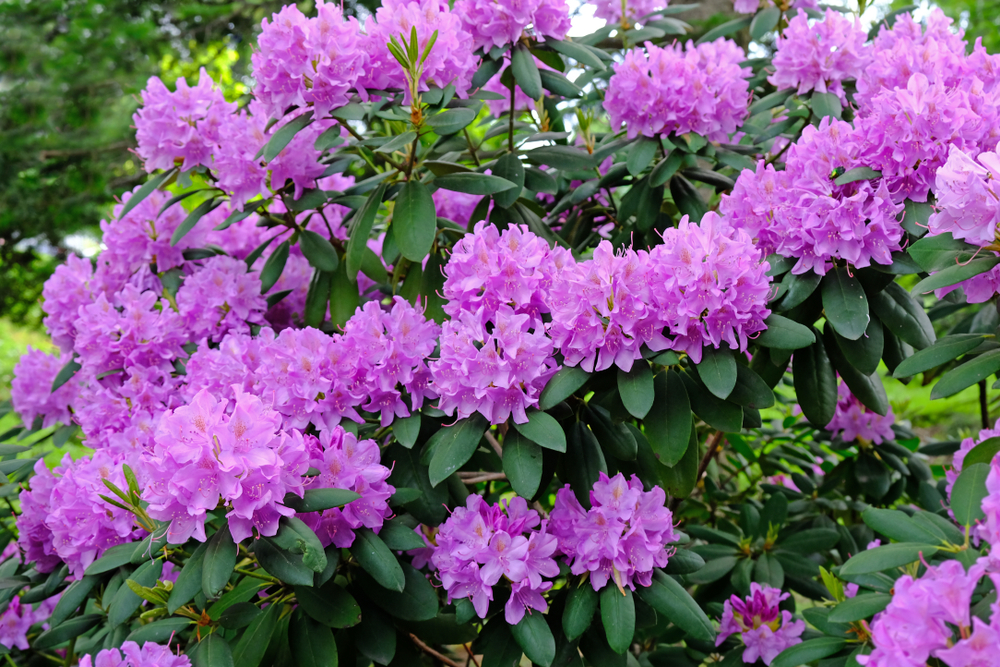
Rhododendron and Azalea
Scientific name: Rhododendron spp.
Native to: Asia and North America
Description: Rhododendron and azaleas are grouped together here because they actually belong to the same genus. They’re famous for having attractive foliage and gorgeous flowers. There are thousands of species and varieties, so there is something for everyone. They can be deciduous or evergreen, and display a remarkable variety of flower colors.
Blueberry
Scientific name: Vaccinium spp.
Native to: North America
Description: The namesake of the family, blueberry bushes, are common ornamental and commercial shrubs. They typically need acidic soil, so growing them in planters where you can control the soil pH is a good idea. You’ll be rewarded with small, bell-shaped flowers and delicious blueberries!
Mountain Laurel
Scientific name: Kalmia latifolia
Native to: Eastern North America
Description: Mountain laurel typically grows as a dense, rounded shrub up to 15 feet high. Its evergreen leaves are rabbit and deer resistant, so it’s a good choice if pesky wildlife keeps chewing up your plants. Mountain laurel produces exceptional blooms with cup-shaped flowers.
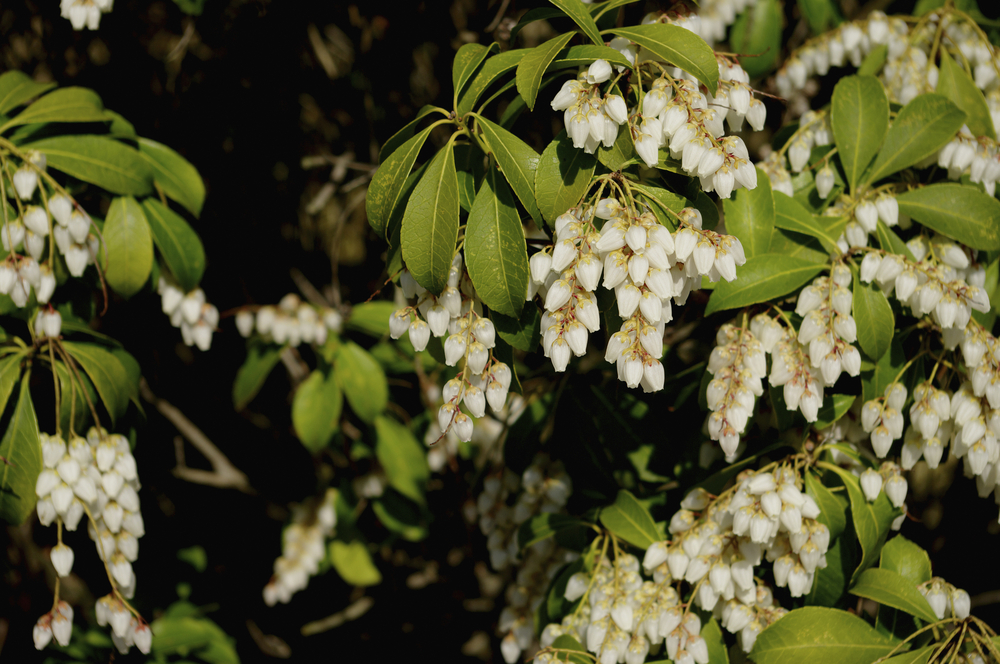
Andromeda
Scientific name: Pieris japonica
Native to: Japan, Taiwan, and East China.
Description: Aside from having one of the coolest common names for a shrub, andromeda also has some of the most beautiful flowers. Drooping clusters of white flowers shower the bush in the springtime and provide a beautiful accent to the dark, evergreen leaves.
Strawberry Tree
Scientific name: Arbutus unedo
Native to: The Mediterranean
Description: Strawberry tree is named after its edible strawberry-colored fruit. They take about a year to ripen, so a single tree will often have fruit and flowers at the same time. Strawberry tree also has attractive, flaky bark.
Hibiscus Family (Malvaceae)
The hibiscus family, also known as the mallow family, is another one of the largest plant families. It contains many interesting ornamental shrubs, although it’s better represented by small herbaceous plants and huge tropical trees.
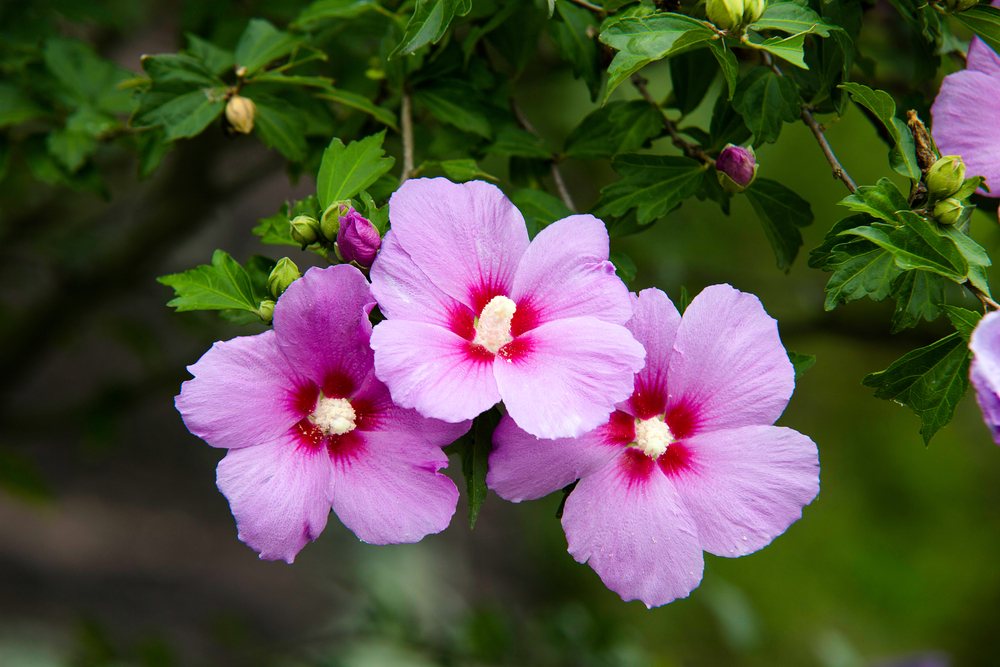
Rose of Sharon
Scientific name: Hibiscus syriacus
Native to: China and India
Description: Rose of Sharon, also just called common hibiscus, bears one of the most recognizable flowers out there. There are hundreds of cultivars that produce flowers of virtually any color you want. Plus, it’s relatively easy to care for, being tolerant of a variety of conditions and environments.
Coral Hibiscus
Scientific name: Hibiscus schizopetalus
Native to: Kenya, Tanzania, and Mozambique
Description: Coral hibiscus, also called spider hibiscus, is famous for its unusual flowers. The lacy, fringed petals adorn flowers that hang down and look like something out of a sci-fi movie. It’s native to tropical Africa, so it won’t do as well in temperate regions, at least outdoors.
Beach Hibiscus
Scientific name: Talipariti tiliaceum
Native to: Tropical beaches throughout the world
Description: Beach hibiscus is a large shrub that many would consider to be a tree. Regardless, this multi-stemmed plant grows on beaches throughout the tropics. It’s possible to cultivate beach hibiscus, but it won’t survive freezing temperatures or in anything other than sandy soil.
Cotton
Scientific name: Gossypium spp.
Native to: Tropics and Subtropics all over the world
Description: The cotton bush is one of the most important commercial plants in the world. It’s been cultivated for 7000 years for the soft, fibrous material it produces. Humans use these fibers to make the textiles you may be wearing right now!

Flowering Maple
Scientific name: Abutilon spp.
Native to: Tropical Asia and Africa
Description: Flowering maple, also called Indian mallow, has maple-like leaves but is actually not related to maple trees at all. The flowers of this small shrub are often specked and display a variety of color combinations. It needs warm temperatures, but it’s often grown as a houseplant and taken outside during the summer months.
California Flannelbush
Scientific name: Fremontodendron californicum
Native to: California
Description: California flannelbush is one of the most beautiful shrubs in California. It’s now planted outside of its home state as an ornamental plant, and people love it for its fast growth. It has soft, fuzzy leaves and puts out an explosion of yellow flowers in the spring.
Dogbane Family (Apocynaceae)
Apocynaceae, the dogbane family, has some of the most toxic plants in the world. They also produce beautiful and fragrant flowers, which has led them to being popular ornamental plants.
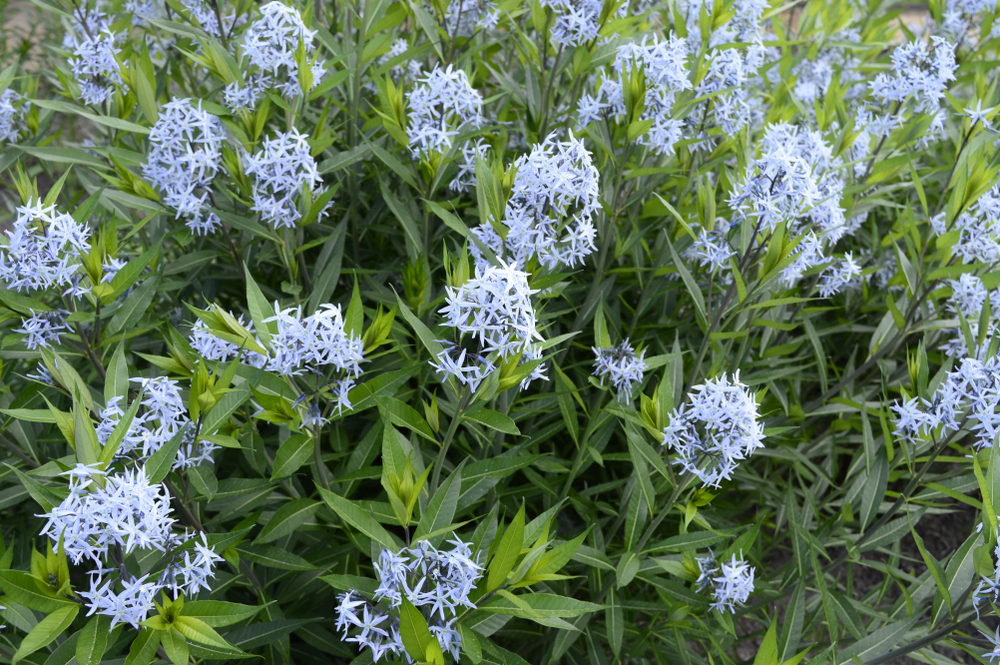
Blue Star Flower
Scientific name: Amsonia tabernaemontana
Native to: Central United States
Description: Blue star flower is an herbaceous perennial plant that grows up to a few feet high. It pushes out graceful, light blue flowers in the spring that give the plant its name. Blue star flower prefers wet, loamy soils.
Oleander
Scientific name: Nerium oleander
Native to: Europe and Asia
Description: Oleander is a large, evergreen shrub that grows best in the tropics and subtropics. It produces abundant, fragrant flowers that are white, pink, or yellow. Since oleander is a tropical plant, it doesn’t do well in places with cold winter but is perfectly happy in a pot that can be brought inside during part of the year.
Yellow Oleander
Scientific name: Cascabela thevetia
Native to: Central and South America
Description: Yellow oleander, also called the be-still tree, is a medium to large shrub that grows in hot, tropical climates. It produces tubular yellow flowers all year long. The entire plant oozes a thick, white latex when cut and is extremely toxic!
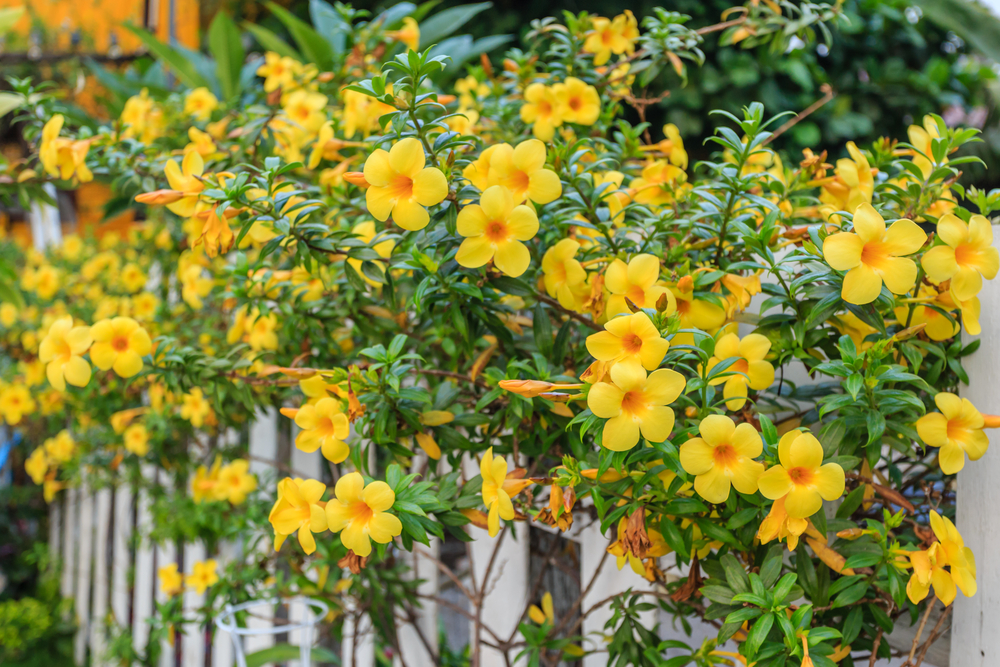
Golden Trumpet
Scientific name: Allamanda cathartica
Native to: South America
Description: This dense, spreading evergreen shrub often grows more like a vine than a bush. It produces large, trumpet-shaped flowers that shine bright yellow. There are other Allamanda species with various flower colors, and all are relatively easy to care for.
Crape Jasmine
Scientific name: Tabernaemontana divaricata
Native to: China, India, Myanmar, and Thailand
Description: Crape jasmine is a small, dense, evergreen shrub with dark, glossy leaves. It has waxy white flowers with petals that curve like a pinwheel. They emit a rich fragrance during the day. Crape jasmine can only be grown in warmer climates with mild winters.
Laurel Family (Lauraceae)
Lauraceae is also the avocado family. Most of the plants in this family are large trees, but there are some bushes and shrubs, too.
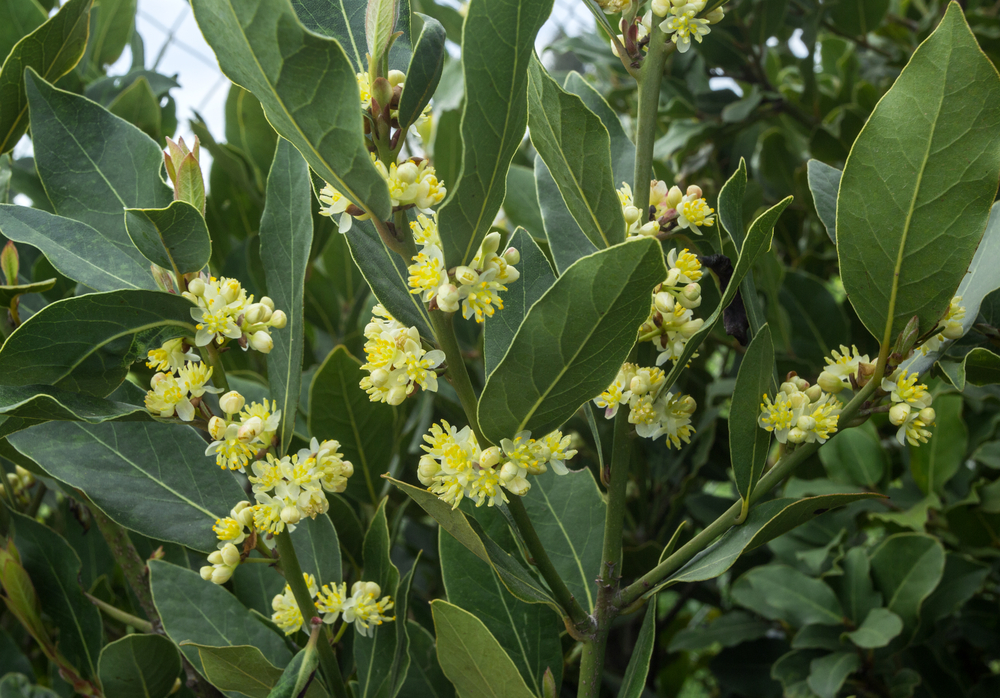
Bay Laurel
Scientific name: Laurus nobilis
Native to: The Mediterranean
Description: Bay laurel is a large shrub or small tree with shiny, evergreen leaves. The leaves are what make this plant famous, due to their fragrance. Bay leaves are commonly used in cooking and add a great taste to dishes. The plant itself can be grown outdoors in warm climates, or indoors in containers.
Cinnamon
Scientific name: Cinnamomum spp.
Native to: The Americas, Asia, and Oceania
Description: Cinnamon is another aromatic plant in the avocado family. Like bay laurel, it can grow as a large shrub but usually takes the form of a tree. Cinnamon that we eat comes from the inner bark of this plant.
Olive Family (Oleaceae)
The olive family is very common in Europe and Asia, where many species have been cultivated for thousands of years. They typically have strong-smelling, colorful flowers.
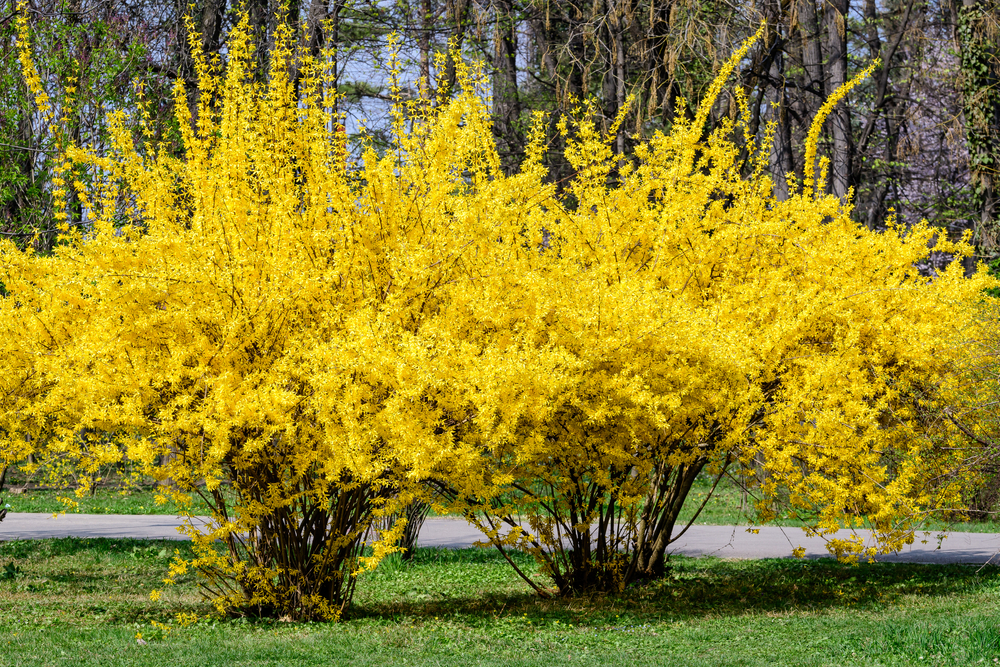
Forsythia
Scientific name: Forsythia spp.
Native to: East Asia
Description: There are many species of forsythia, and all are known for their colorful, fragrant flowers. Their yellow blooms attract loads of pollinators like bees and butterflies. In addition, forsythias are usually very hardy and easy to take care of, making them a great low-maintenance shrub for any garden.
Lilac
Scientific name: Syringa vulgaris
Native to: Southeast Europe
Description: If you want a garden that smells good, look no further than lilac bushes. They are some of the most fragrant plants in the garden. The flowers bloom in spring and display different colors depending on the type of cultivar. Lilac prefers lots of sun and well-drained soil. It’s unfortunately prone to mildew diseases, so keep it well ventilated and prune it occasionally to avoid this.
Common Jasmine
Scientific name: Jasminum officinale
Native to: Asia
Description: Common jasmine is famous for its incredibly fragrant flowers. It typically grows as a vine but can take the form of a low, creeping shrub as well. It can be trained to grow on fences or trellises, making it a great living fence or hedge plant.
Daisy Family (Asteraceae)
The daisy family, Asteraceae, is the most diverse plant family in the world. It’s mostly known for the incredibly diverse array of wildflowers, but there are a number of bushes and shrubs as well.
Sunflower
Scientific name: Helianthus spp.
Native to: North, Central, and South America
Description: The common sunflower isn’t normally what we think of when we hear “bush” or “shrub”. But, there are a number of Helianthus species that grow as woody shrubs. They all have huge, composite flower heads and are perfect choices for pollinator gardens.
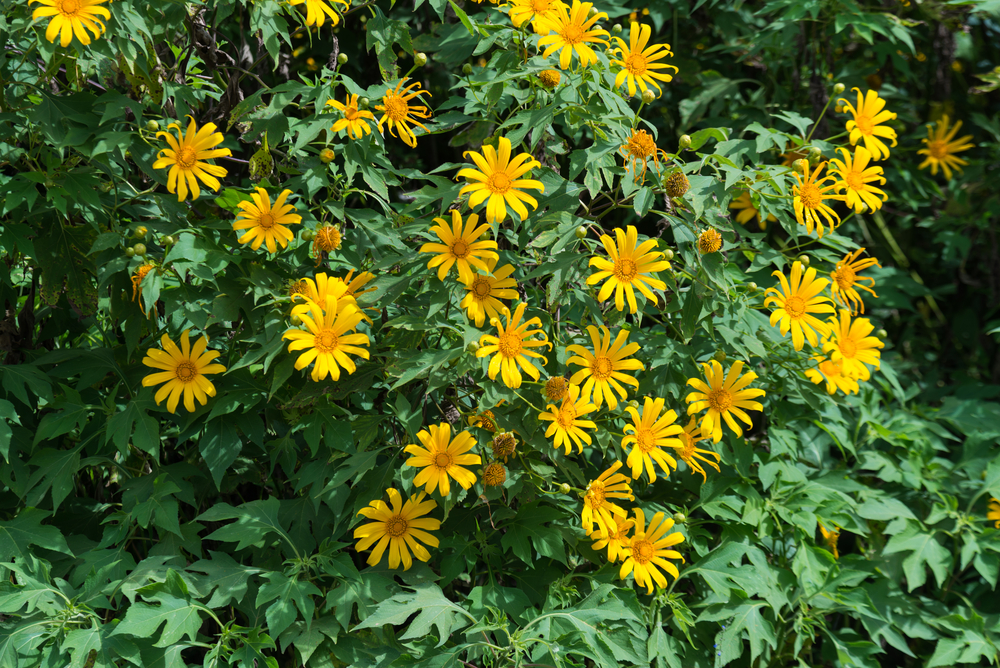
Mexican Sunflower
Scientific name: Tithonia diversifolia
Native to: Mexico
Description: Mexican sunflower, also called tree marigold, is a dense shrub grown for its showy, yellow flowers. It’s also a good choice as a hedge plant. Mexican sunflower has been introduced all over the world’s tropics and is becoming invasive in some countries.
Sagebrush
Scientific name: Artemisia spp.
Native to: Asia, Europe, and North America
Description: There are hundreds of Artemisia species that grow all over the world. Many species are grown for their silvery, aromatic foliage. Sagebrush typically grows as small, dense bushes with many upright branches and stems. The small flowers don’t smell like much, as they are pollinated by wind.
Baccharis
Scientific name: Baccharis spp.
Native to: North, Central, and South America
Description: Like sagebrush, Baccharis is a diverse genus of shrubs with over 500 species. They grow in a similar fashion to sagebrush as well. Baccharis bushes have dense, evergreen foliage and make good windbreaks. The flowers are rich in nectar, making them good shrubs to plant in a pollinator garden.
Conclusion
Whew, that was a lot of shrubs! Hopefully, you saw a few new ones and you have some ideas of bushes and shrubs you can plant in the garden.
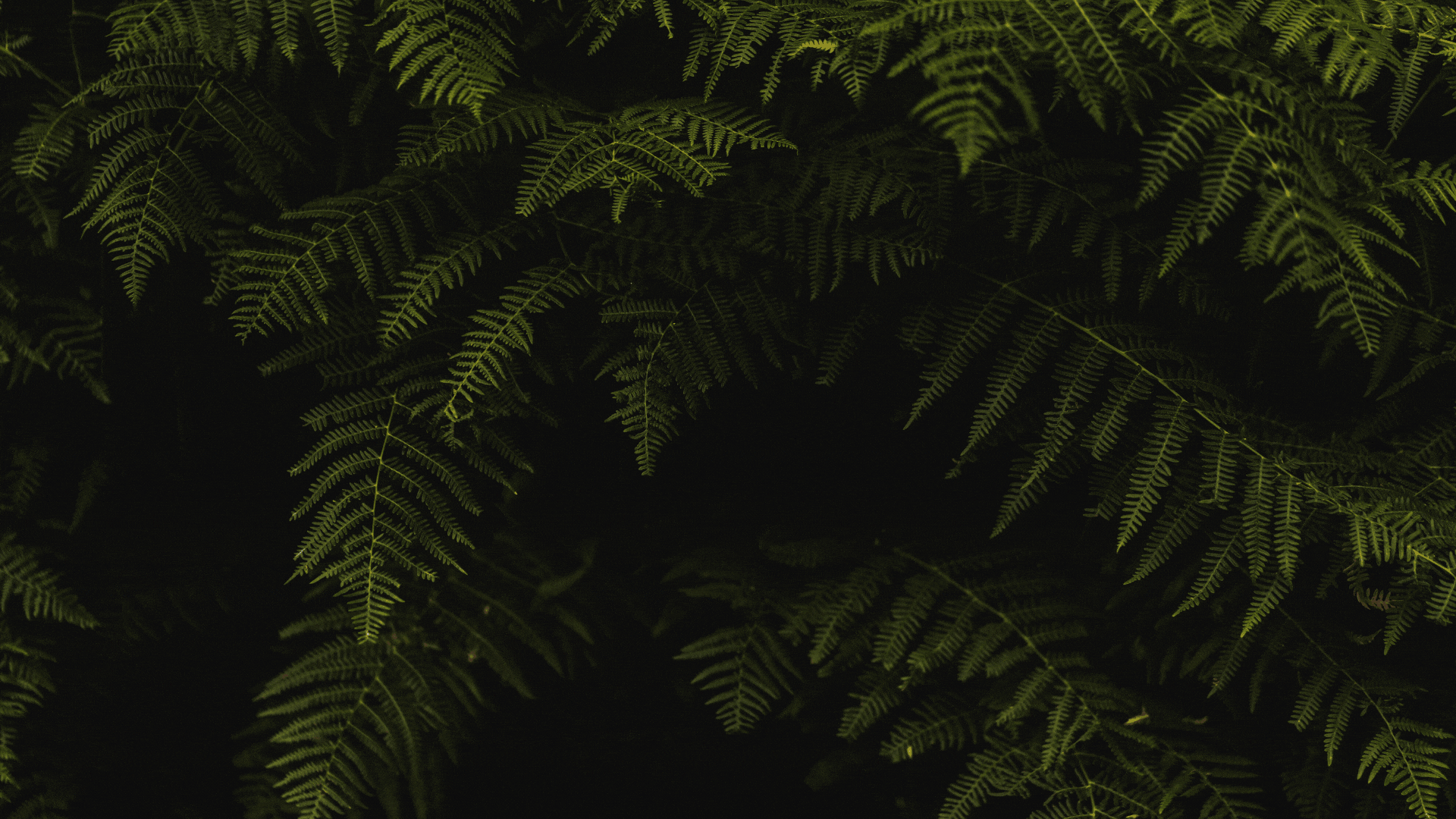

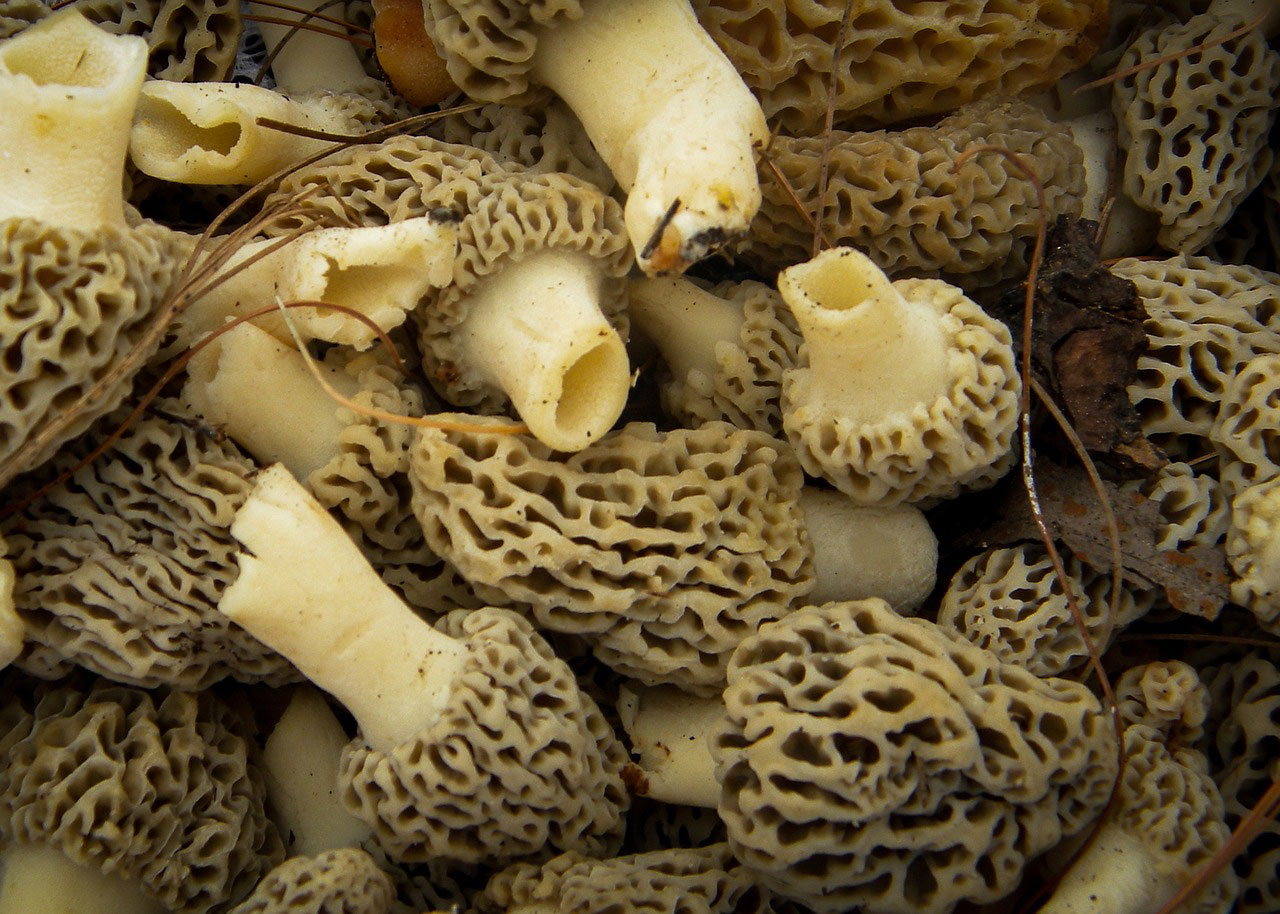
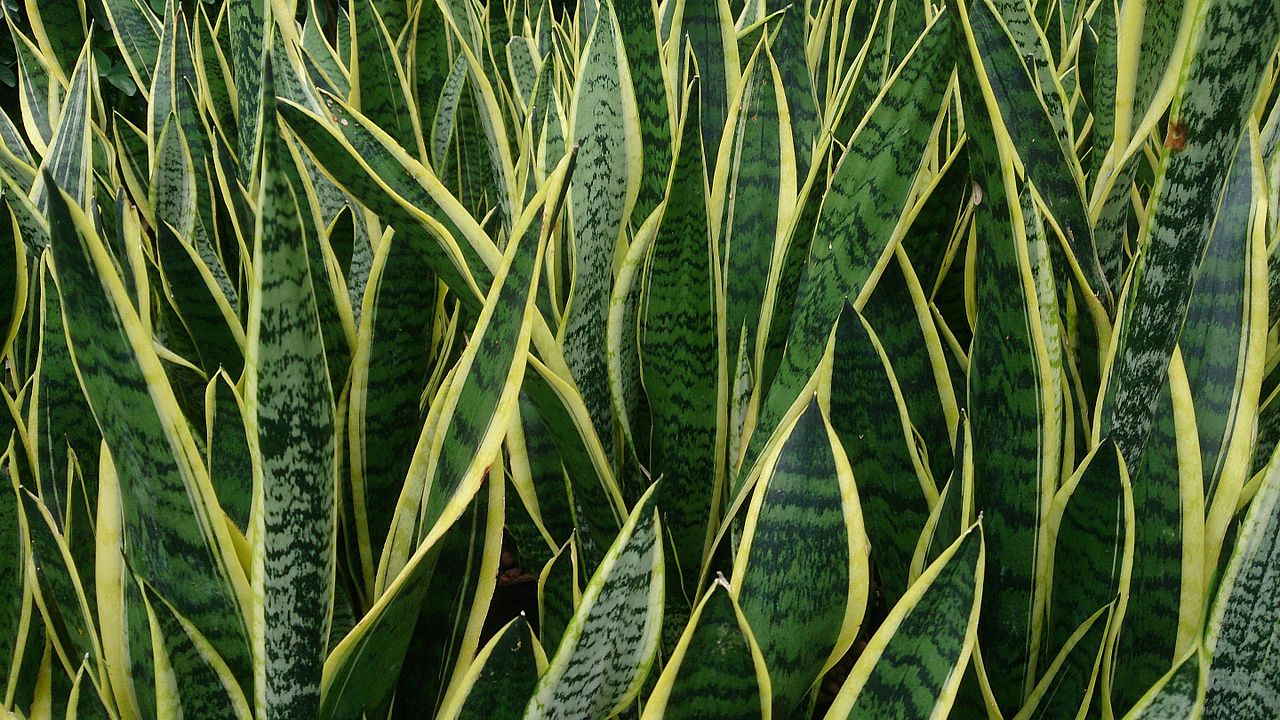
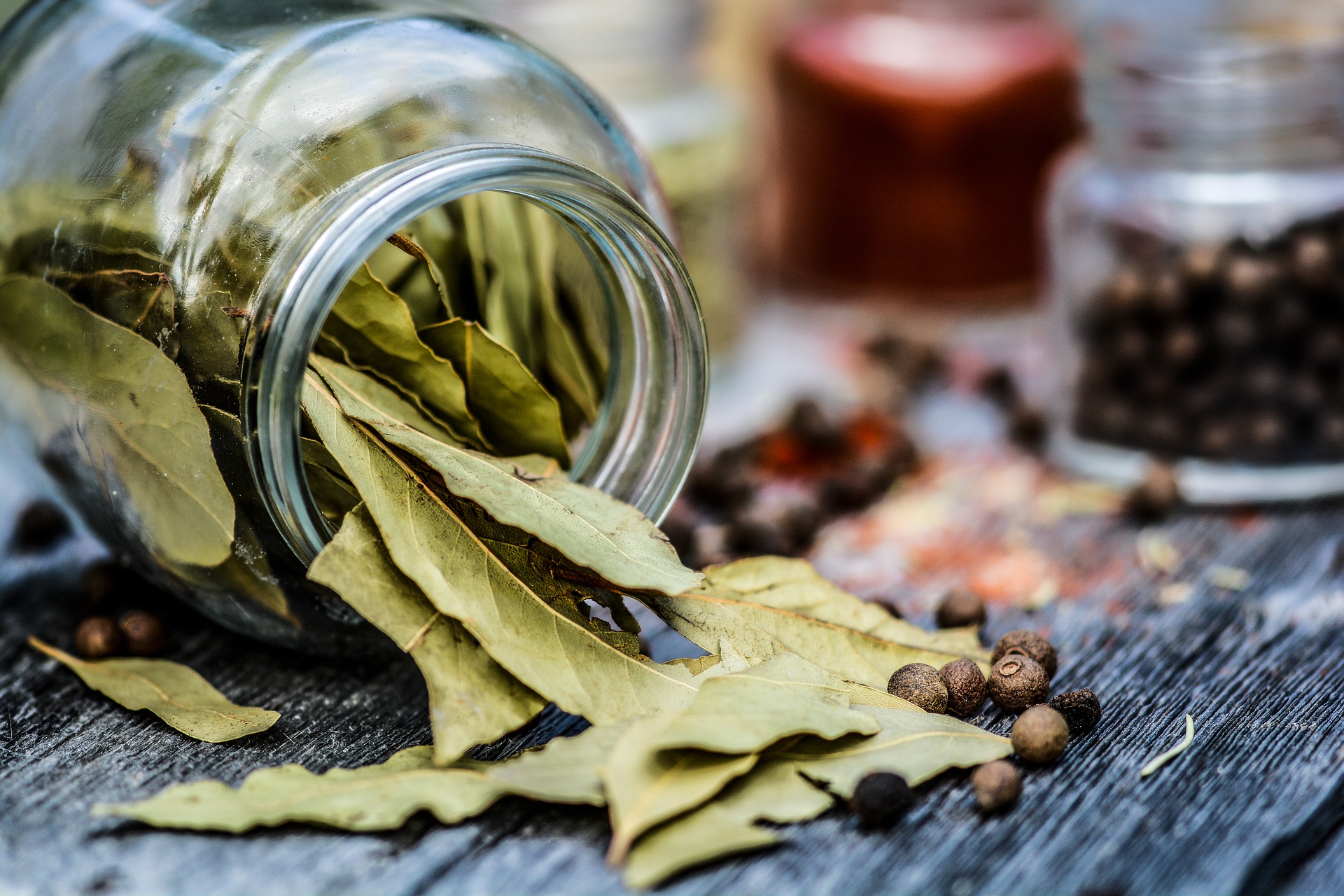
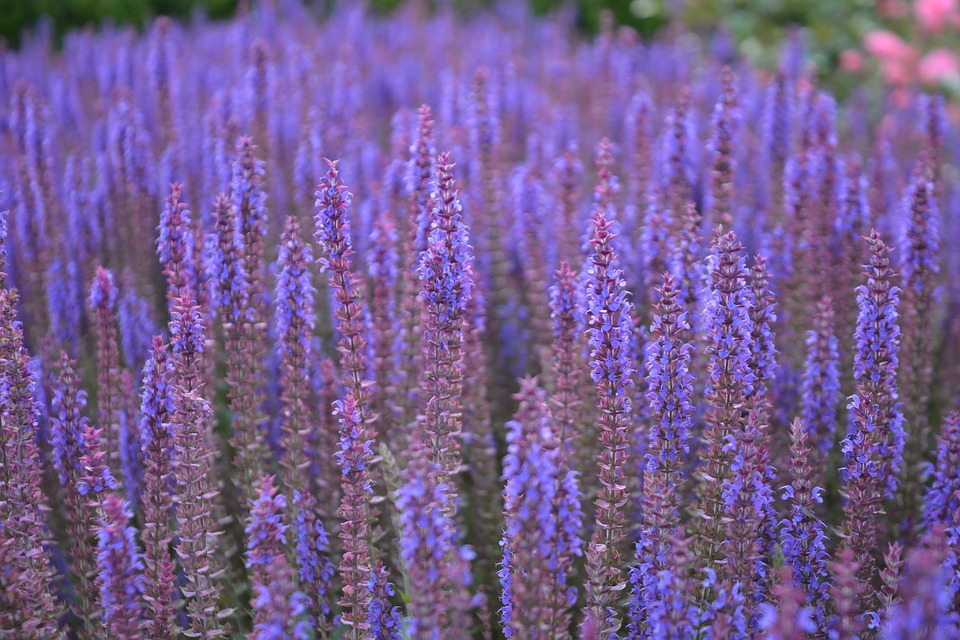
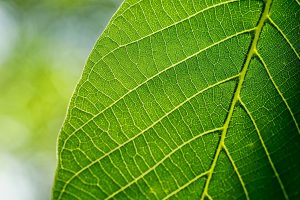
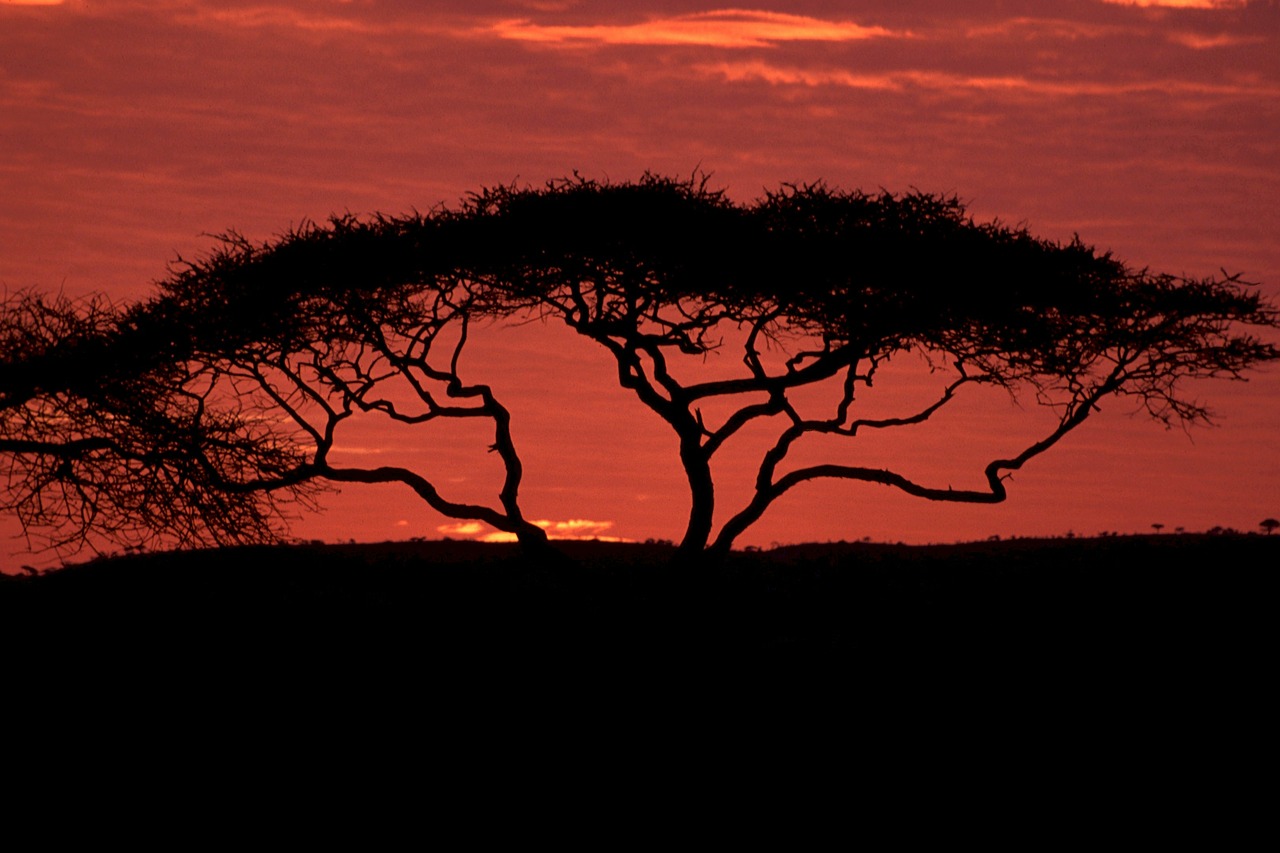
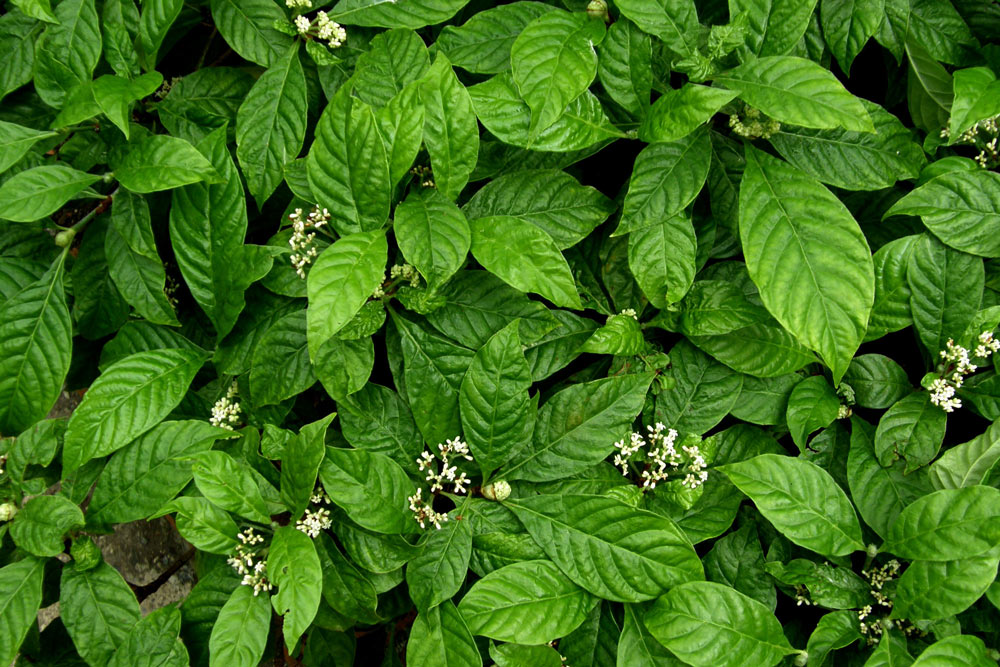
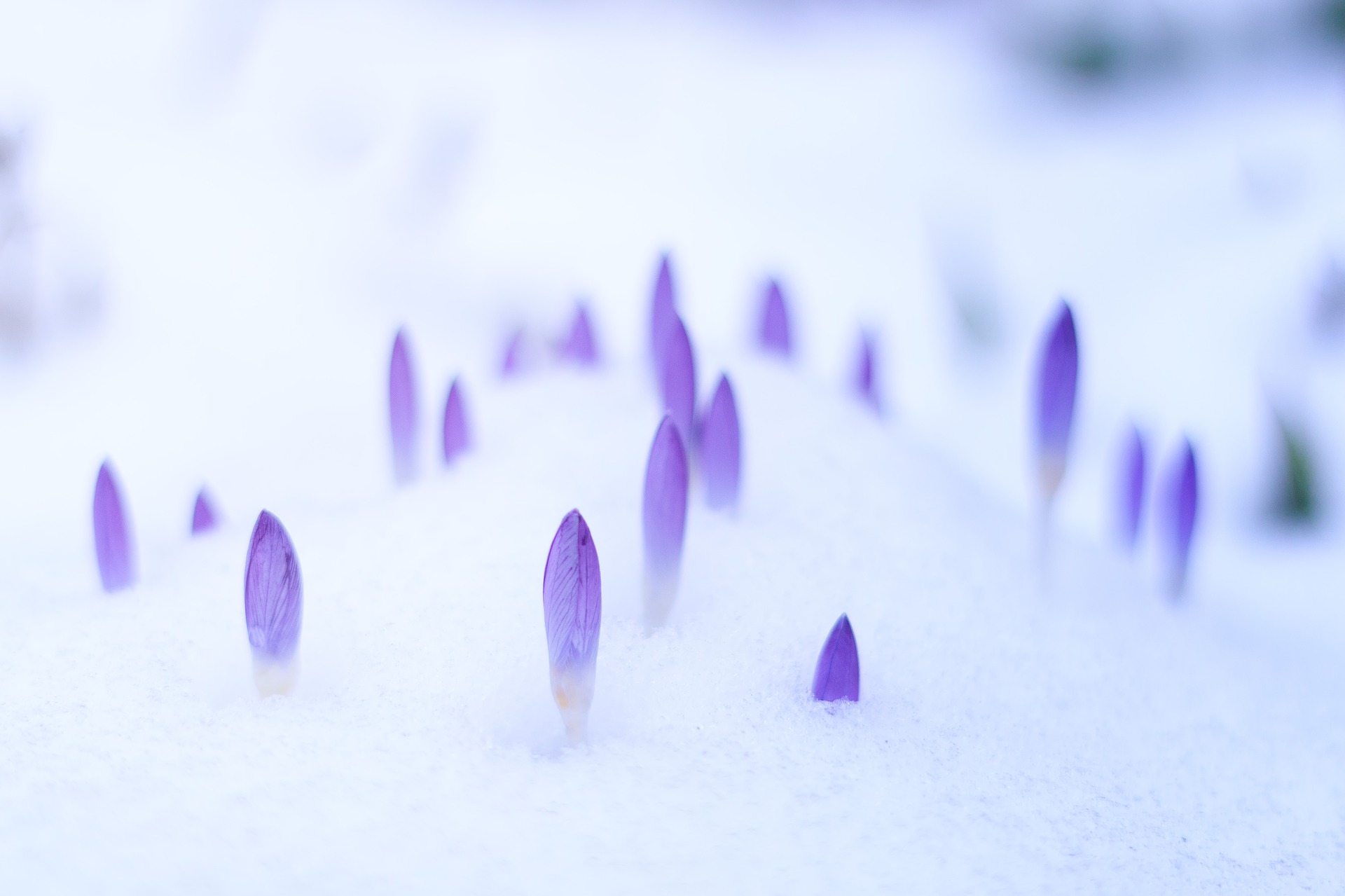
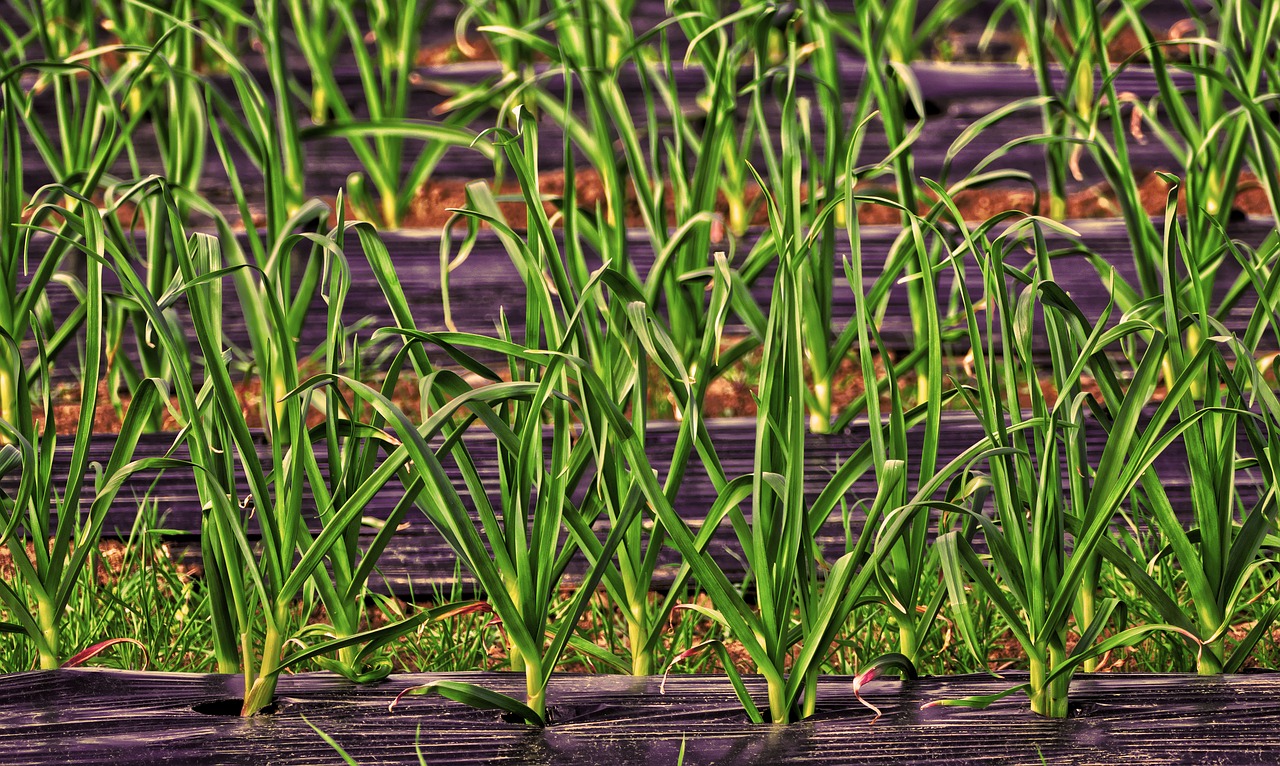
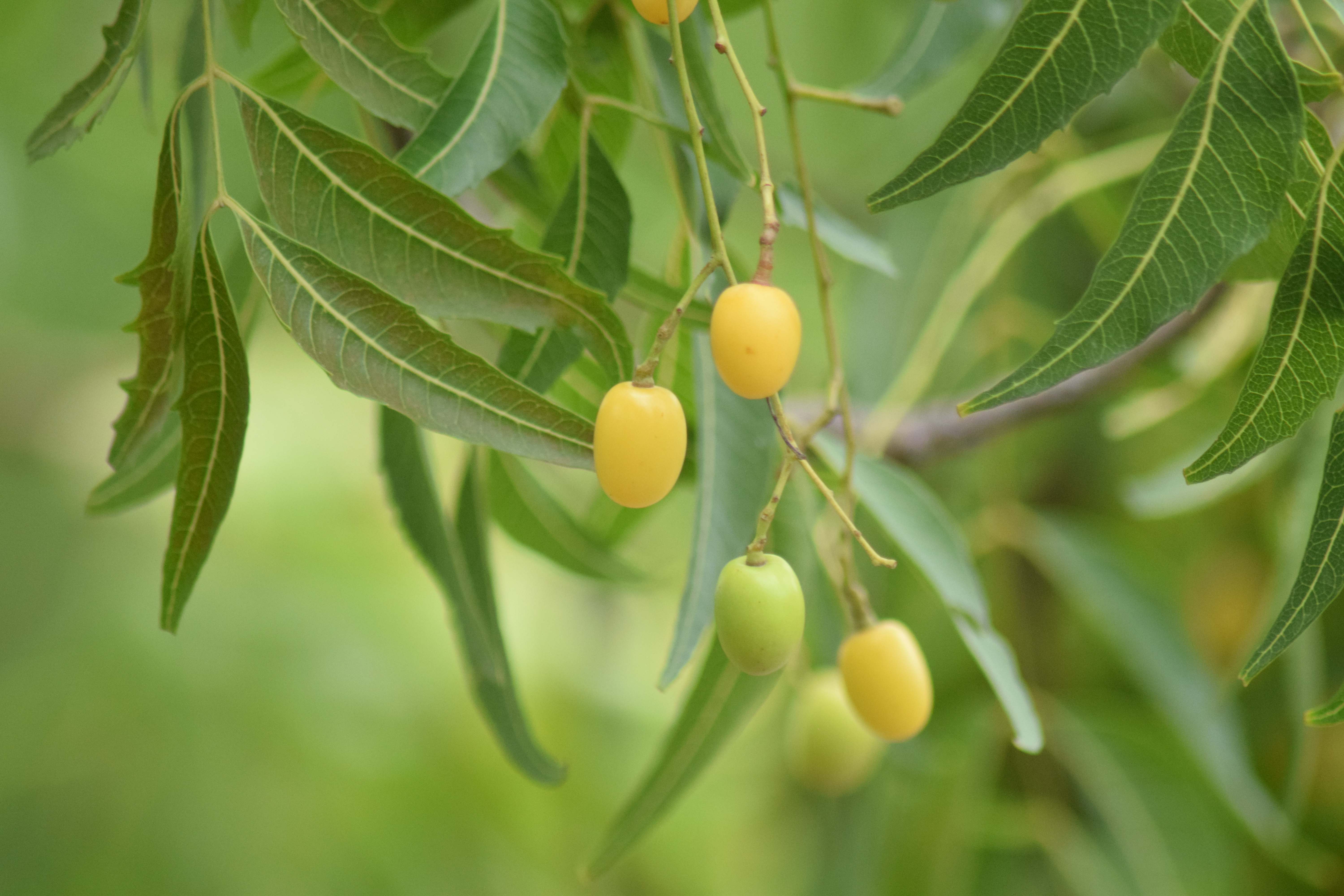
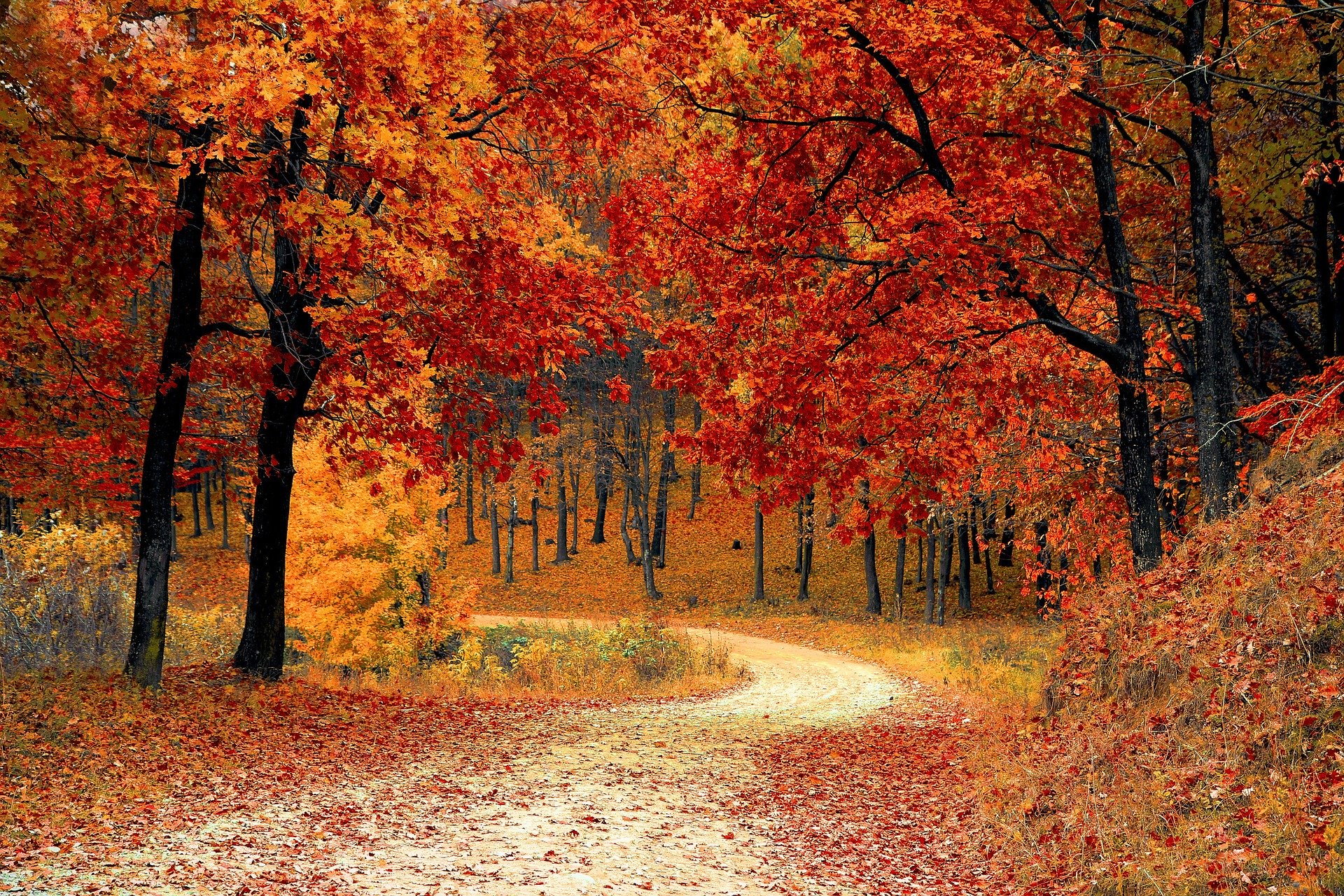
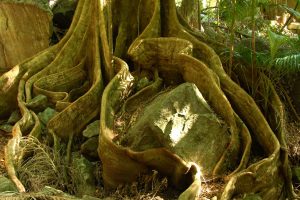

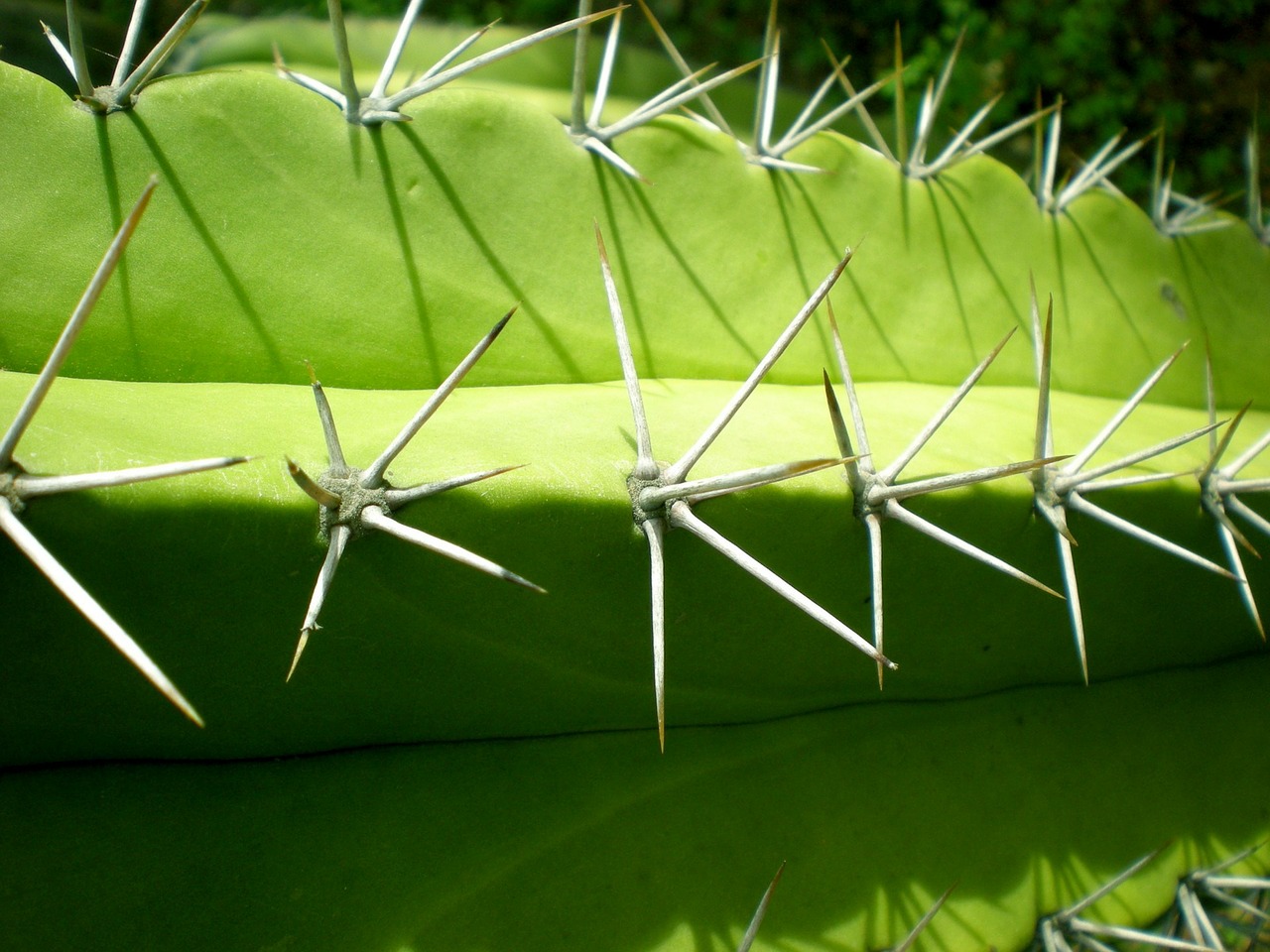
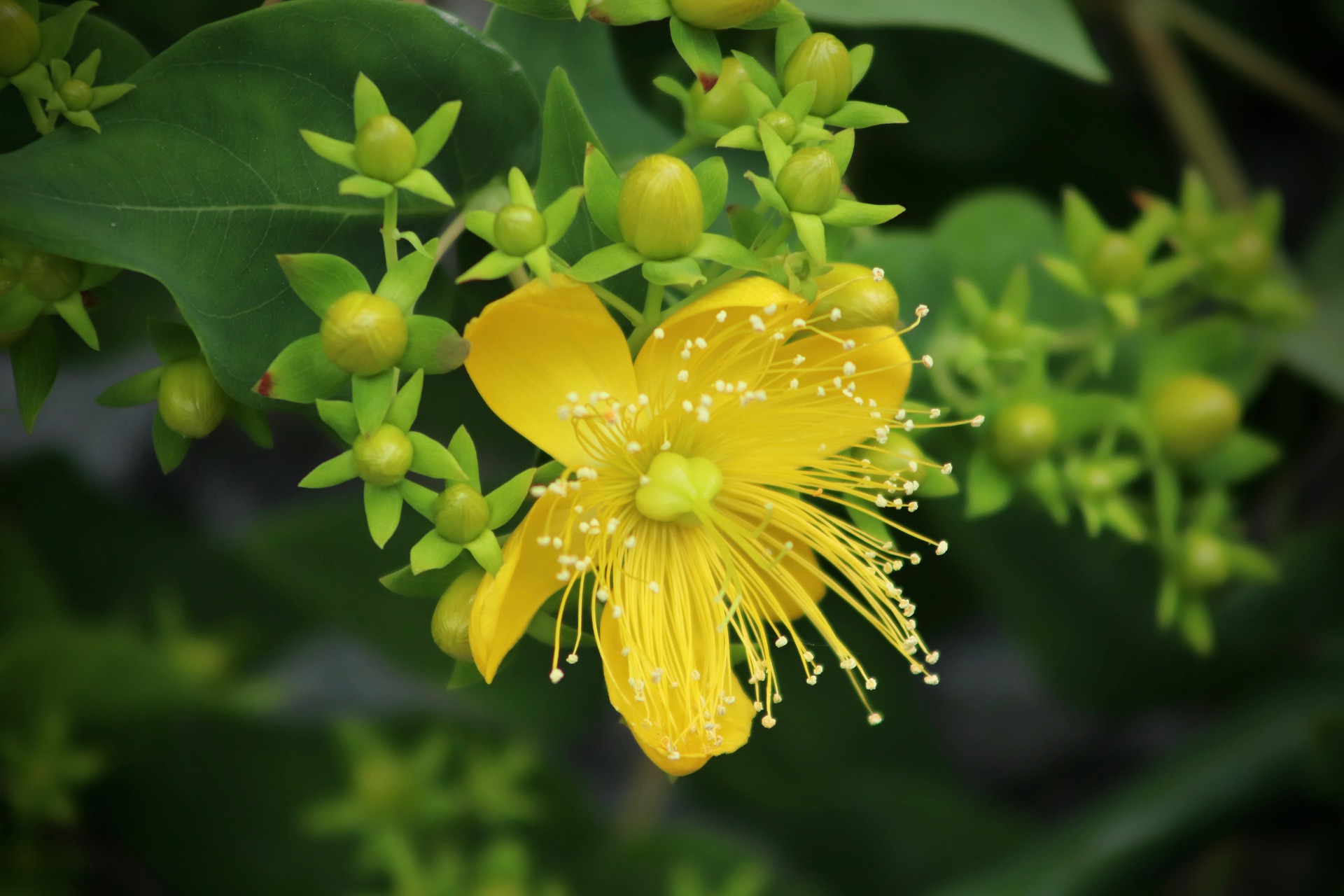
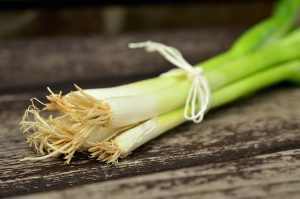
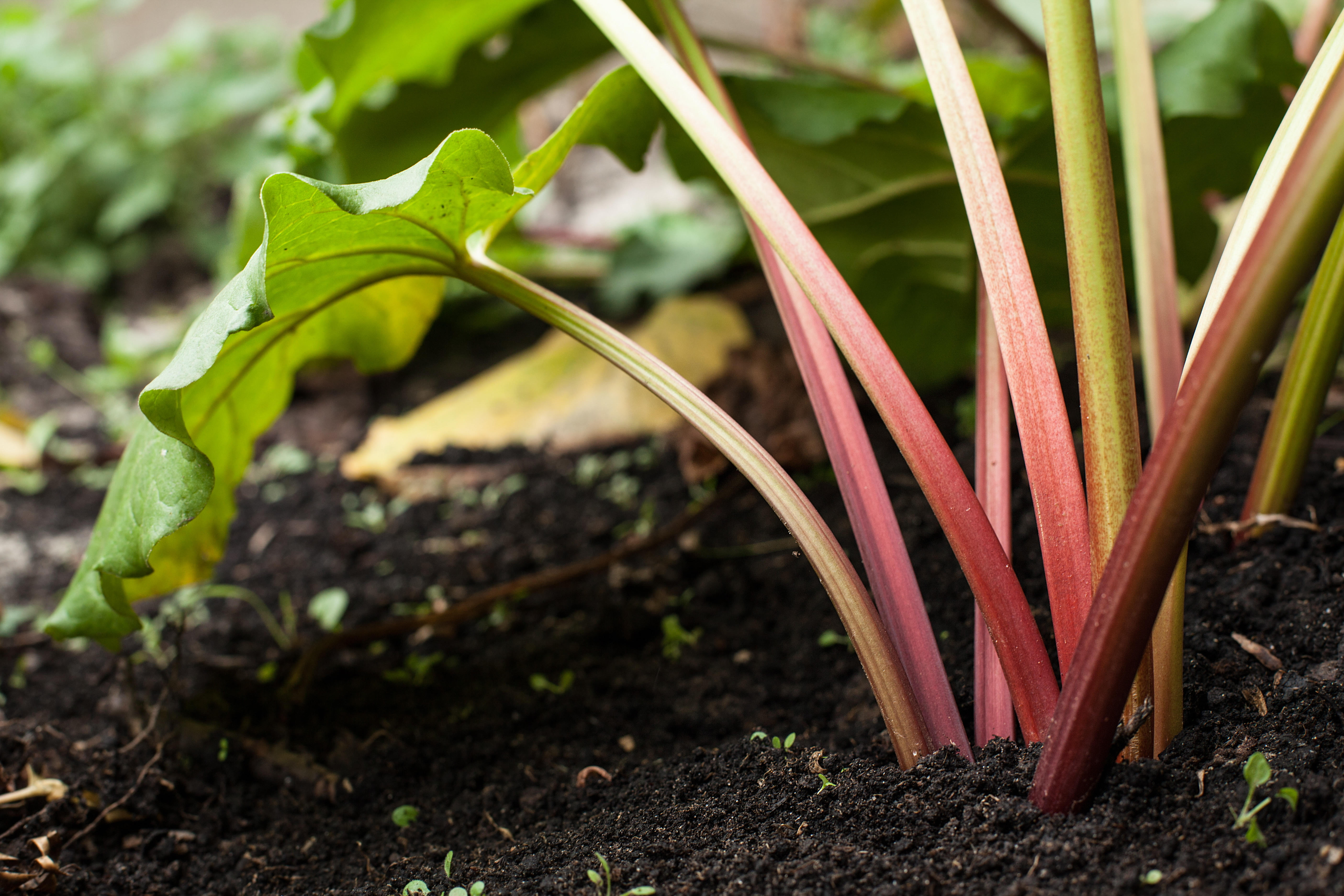

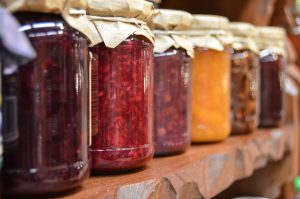
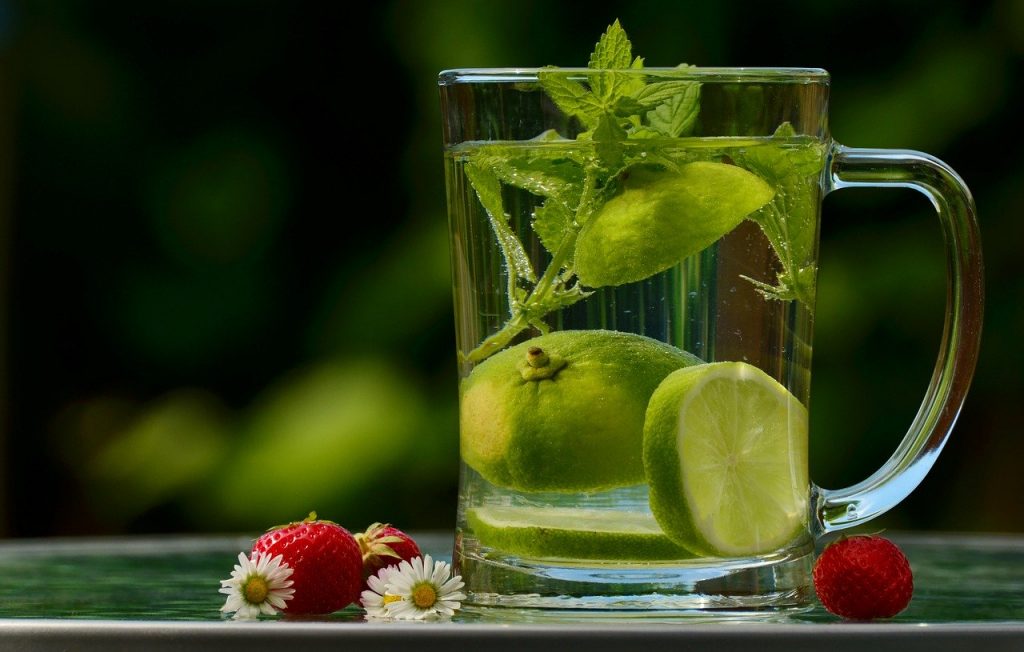
0 Comments